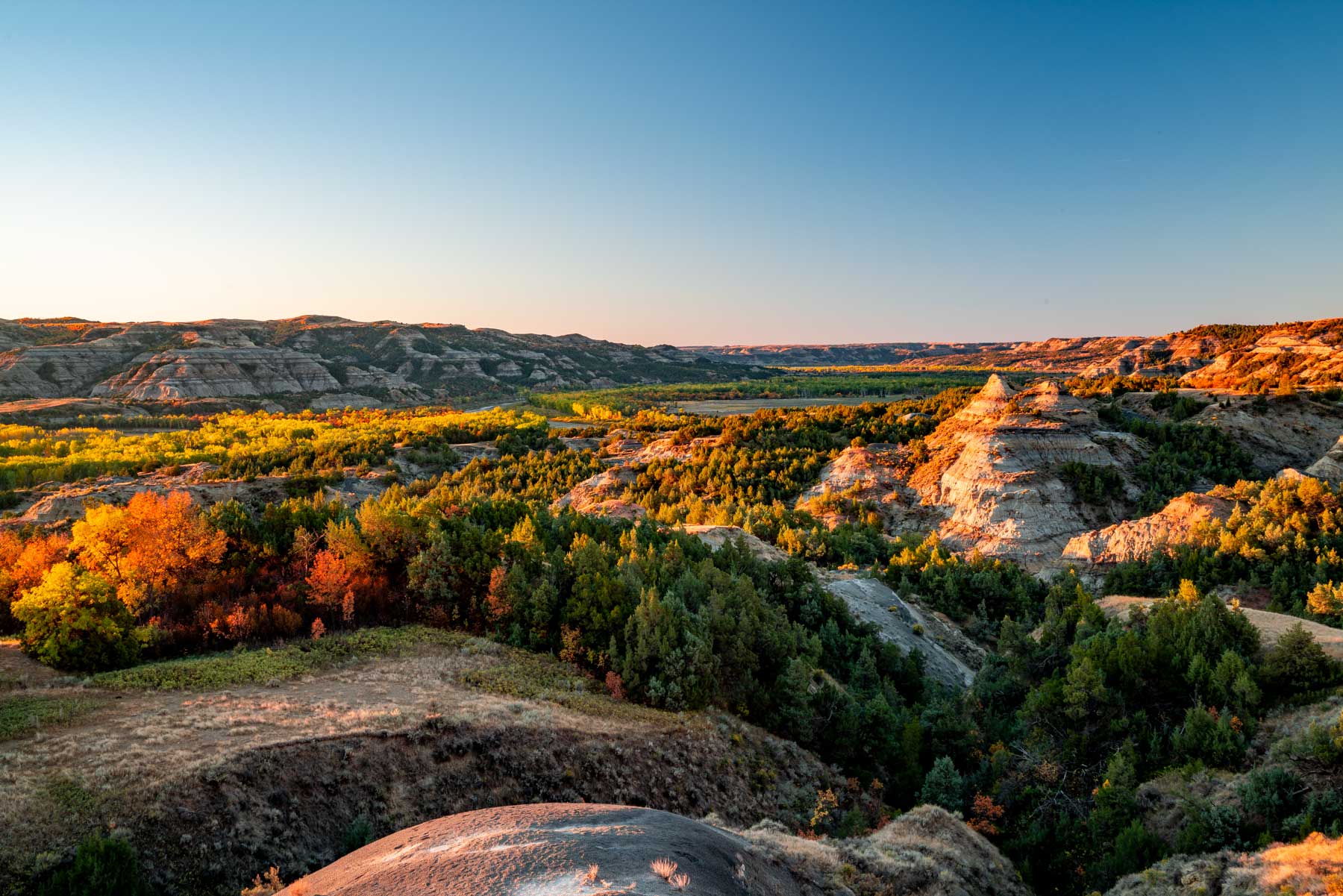
Article Summary: Historic Sites In North Dakota
Historic Sites In North Dakota. More Than Just Parks has 15 incredible must-see sites for you to visit.
I’ve been to so many of these amazing places since retiring from teaching in 2018. Did I mention that I taught history? I spent a lifetime teaching about the history behind these momentous sites. Then I got to see them firsthand. And now I’m sharing the stories of these incredible places with you. It doesn’t get any better than that!
I’m going to give you my list of the Top 15 Historic Sites In North Dakota that you’ll want to see.
To be clear, this list includes national park sites (as in sites managed by the National Park Service) as well as national parks. It also includes sites not managed by the National Park Service. After all, we’re more than just parks!
One book that you might want to pick up before making your trip to the Roughrider State is: Greater Than a Tourist- North Dakota USA: 50 Travel Tips from a Local by Rachel Reko.
Without further ado, let’s dive in.
Table Of Contents: Historic Sites In North Dakota
Historic Sites In North Dakota
- Top 15 Historic Sites In North Dakota
- Top 10 Historic Sites In North Dakota
- Top 5 Historic Sites In North Dakota
- 5. Fort Totten Historic Site
- 4. Knife River Indian Villages National Historic Site
- 3. Fort Union Trading Post National Historic Site
- 2. North Dakota Heritage Center & State Museum
- 1. Theodore Roosevelt National Park
- Watch Our Theodore Roosevelt National Park Film
- List Of Historic Sites In North Dakota
- Why Trust Us About Historic Sites In North Dakota?
- Meet The Parks Brothers
- We Hope You’ll Follow Our Journey
Top 15 Historic Sites In North Dakota
15. World’s Largest Buffalo Monument

North Dakota is known for its Badlands, now part of the 70,000-acre Theodore Roosevelt National Park. Roosevelt’s journey to the Dakota Territory in 1883 to hunt bison was among his Western ventures that instilled in him a fervor for preservation of natural lands, and ultimately the first national parks.
More Than Just Parks is excited to share what we consider to be so special about the Roughrider State. We’ve got our list of the Top 15 Historic Sites In North Dakota. And we’re kicking it off at #15 with the world’s largest buffalo monument.
The World’s Largest Buffalo Monument, also known as “Dakota Thunder,” is located in Jamestown, North Dakota. The monument is a large, concrete sculpture of a buffalo that stands 26 feet tall, 46 feet long, and weighs 60 tons.
A Monument Which Would Celebrate The History & Heritage Of The American West
The idea for the monument was first proposed in 1959 by Harold Newman, a local businessman who wanted to create a tourist attraction that would celebrate the history and heritage of the American West. The monument was designed by sculptor Elmer Petersen and constructed between 1959 and 1961.
The buffalo was chosen as the subject of the monument because it played a central role in the history and culture of the Great Plains region, and was a symbol of the area’s natural beauty and vitality. The monument was also intended to serve as a tribute to the Native American tribes who relied on buffalo for food, clothing, and shelter.
The World’s Largest Buffalo Monument quickly became a popular tourist attraction and a symbol of Jamestown’s unique character and heritage. Over the years, the monument has undergone several renovations and updates, including the addition of a new visitor center in 2010.
Today, the monument remains an important cultural and educational resource for visitors to North Dakota, offering a glimpse into the history and significance of the buffalo in the Great Plains region.
It is also a testament to the ingenuity and creativity of the people of Jamestown, who came together to create a lasting monument to their community and its rich history.
14. Fort Buford State Historic Site

If you enjoy military history then you’ll love our next historic site. At #14 on our list of the Best Historic Sites In North Dakota is the Fort Buford State Historic Site, which is located in western North Dakota.
The site was originally established as a military fort in 1866, following the end of the American Civil War. It was named after General John Buford, a Union cavalry commander who had died during the war.
The fort was initially constructed to protect the growing traffic on the Missouri River and to establish a presence in the region following the expansion of the railroad. The fort was also involved in several key events in American history, including the Indian Wars of the late 19th century and the construction of the nearby Great Northern Railway.
During its time as an active military fort, Fort Buford was home to several notable figures, including General George Custer, who served at the fort in the late 1860s before his fateful encounter with the Lakota Sioux at the Battle of the Little Bighorn.
The fort remained in operation until 1895, when it was decommissioned and many of its buildings were sold or dismantled. However, several buildings and structures were preserved, and the site was eventually acquired by the state of North Dakota and turned into a state historic site.
Things To Do At Fort Buford
- Explore the Fort: Fort Buford was a military post that played a significant role in the development of the Northern Plains. Visitors can explore the fort’s buildings, including the guardhouse, barracks, and officers’ quarters.
- Visit the Indian Cemetery: Adjacent to the fort is the Indian Cemetery, where soldiers and civilians who died during the Indian Wars were buried. A monument honors the Native Americans who died at the fort.
- Walk the River Trail: The River Trail is a scenic walking trail that follows the Missouri River. It offers beautiful views of the river and the surrounding landscape.
- Learn about the Dakota War of 1862: Fort Buford was involved in the conflict between the U.S. Army and the Dakota people in 1862. Visitors can learn about the causes and consequences of the war through exhibits and interpretive programs.
- Attend Living History Events: Fort Buford State Historic Site hosts living history events throughout the year, where visitors can see reenactors portraying life at the fort during different periods of its history.
- Picnic: The fort’s grounds offer a beautiful place to have a picnic. There are picnic tables available, and visitors can enjoy the peaceful surroundings and scenic views.
- Go Fishing: The Missouri River is an excellent place for fishing. Visitors can fish for a variety of species, including catfish, walleye, and northern pike.
- Birdwatching: The area around Fort Buford State Historic Site is a great place for birdwatching. Visitors can see a variety of bird species, including bald eagles, pelicans, and sandhill cranes.
- Visit the Visitor Center: The Visitor Center provides information on the fort’s history and the surrounding area. There are exhibits, artifacts, and a gift shop.
- Take a Guided Tour: Guided tours are available, providing visitors with a more in-depth understanding of the fort’s history and significance.

13. The Enchanted Highway
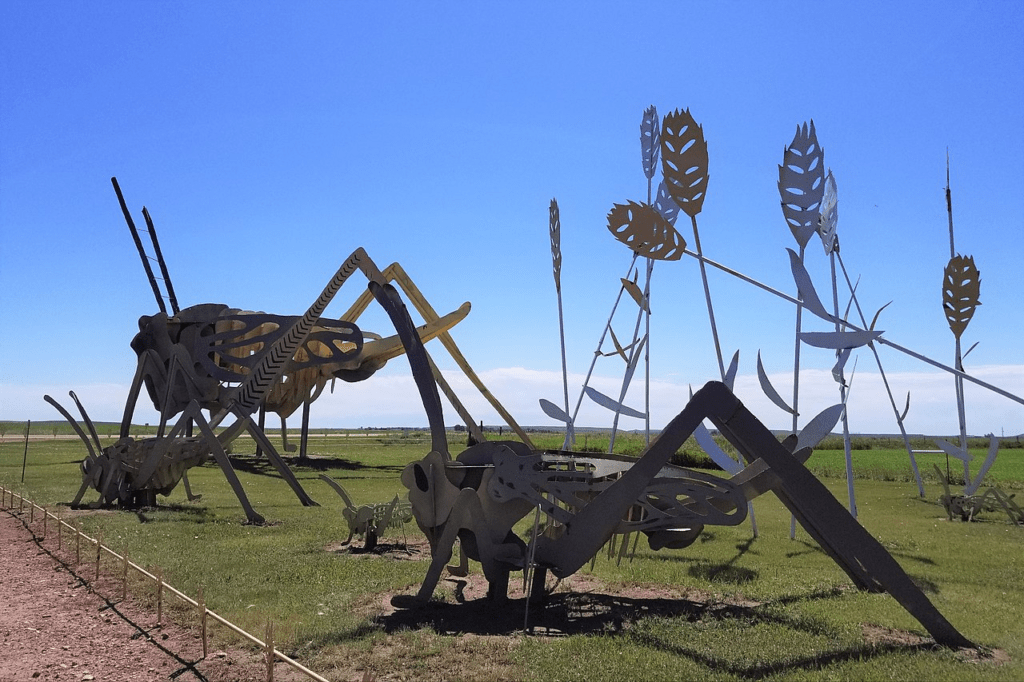
Next up is enchantment! At #13 on our list of the Best Historic Sites In North Dakota is The Enchanted Highway.
It’s a 32-mile stretch of road located in western North Dakota, that features a series of large, unique sculptures created by artist Gary Greff. The highway was officially dedicated in 1993 and has become a popular tourist attraction in the state.
The project began in the late 1980s when Greff, a local schoolteacher and artist, decided to create a series of large sculptures along a stretch of highway in order to attract visitors to the struggling small towns in the area. Greff’s first sculpture, “Geese in Flight,” was completed in 1991 and is a 110-foot-tall metal sculpture of geese flying over the highway.
Over the years, Greff continued to create additional sculptures along the highway, each one designed to capture the unique character and heritage of the surrounding region.
The World’s Largest Tin Family
These include “The World’s Largest Tin Family,” a group of metal sculptures depicting a family of farmers; “Teddy Roosevelt Rides Again,” a 51-foot-tall sculpture of the former president riding a horse; and “Fisherman’s Dream,” a sculpture of a giant fish leaping out of a pond.
The Enchanted Highway has become a popular tourist destination in North Dakota, attracting visitors from around the world who come to see the unique sculptures and explore the small towns and natural beauty of the region.
The project has also helped to revitalize the local economy, with businesses and attractions springing up in the area to serve the growing number of visitors.

12. Bagg Bonanza Farm

Next up on our list of the Best Historic Sites In North Dakota is the Bagg Bonanza Farm.
Bagg Bonanza Farm is a historic farm located near Mooreton, North Dakota. The farm was established in 1915 by R. M. Tuttle, who purchased 7,000 acres of land and began cultivating wheat and other crops on a large scale.
In 1920, the farm was purchased by Ernest F. Bagg, a wealthy businessman from Minneapolis. Bagg expanded the farm to over 22,000 acres, making it one of the largest bonanza farms in the region. He also introduced new farming techniques and technologies, such as steam-powered tractors and combines, to increase efficiency and productivity.
During its heyday in the 1920s, Bagg Bonanza Farm employed over 100 workers and produced an average of 500,000 bushels of wheat per year. The farm also had its own railway station, grain elevator, and other facilities to handle its large-scale operations.
However, the farm’s fortunes began to decline in the 1930s, as a combination of drought, soil erosion, and economic pressures took their toll. The farm was eventually sold to the federal government in the 1940s, and the land was divided up and sold to individual farmers.
Today, Bagg Bonanza Farm is a National Historic Landmark and a popular tourist destination, offering visitors a glimpse into the history and legacy of bonanza farming in North Dakota.
The site includes several original buildings, including the Bagg family’s elegant mansion, as well as exhibits and interpretive programs that highlight the unique history and culture of the region.
11. Pembina State Museum

If you love learning about the history and culture of North Dakota then you’ll enjoy our next historic site. At #11 is the Pembina State Museum.
The Pembina State Museum is located in Pembina, North Dakota. The museum was established in 1963 in order to preserve and showcase the history of the region, which was one of the earliest settled areas in North Dakota.
The museum’s collection includes artifacts, photographs, and other items related to the history of Pembina and the surrounding region. This includes exhibits on the fur trade, the Metis people, early settlement, agriculture, transportation, and other aspects of local history.
One of the museum’s most significant exhibits is the Pembina Turtle Mountain Chippewa Indian Gallery, which features artifacts and displays related to the traditional culture and history of the Turtle Mountain Chippewa tribe, which has inhabited the area for centuries.
The museum is housed in a historic building that was originally constructed in 1907 as the Pembina County Courthouse. The building served as the county courthouse until 1961, when a new courthouse was built, and it was subsequently converted into a museum.
The building itself is a fine example of Classical Revival architecture and is listed on the National Register of Historic Places.
The Pembina State Museum is a popular tourist destination in North Dakota and a valuable resource for anyone interested in the history and culture of the region. Its exhibits and programs offer a unique perspective on the history of North Dakota and the role that Pembina has played in shaping the state’s development over the years.
Things To Do
Here are some of the things you can see and do at the museum:
- Explore exhibits: The museum features exhibits showcasing the history of the region, including artifacts, photographs, and interactive displays that tell the story of the people who lived and worked in the area.
- Learn about the fur trade: Visitors can learn about the history of the fur trade in the region and how it played a role in the development of the area.
- See historic buildings: The museum grounds include several historic buildings, including a 1910 one-room schoolhouse and a 1910 church, which visitors can tour and learn about the early settlement of the area.
- Participate in educational programs: The museum offers educational programs for visitors of all ages, including guided tours, workshops, and hands-on activities that help bring the history of the region to life.
- Attend special events: The museum hosts special events throughout the year, including historic reenactments, living history demonstrations, and cultural festivals that provide opportunities for visitors to learn about the region’s rich cultural heritage.
Top 10 Historic Sites In North Dakota
10. North Country National Scenic Trail
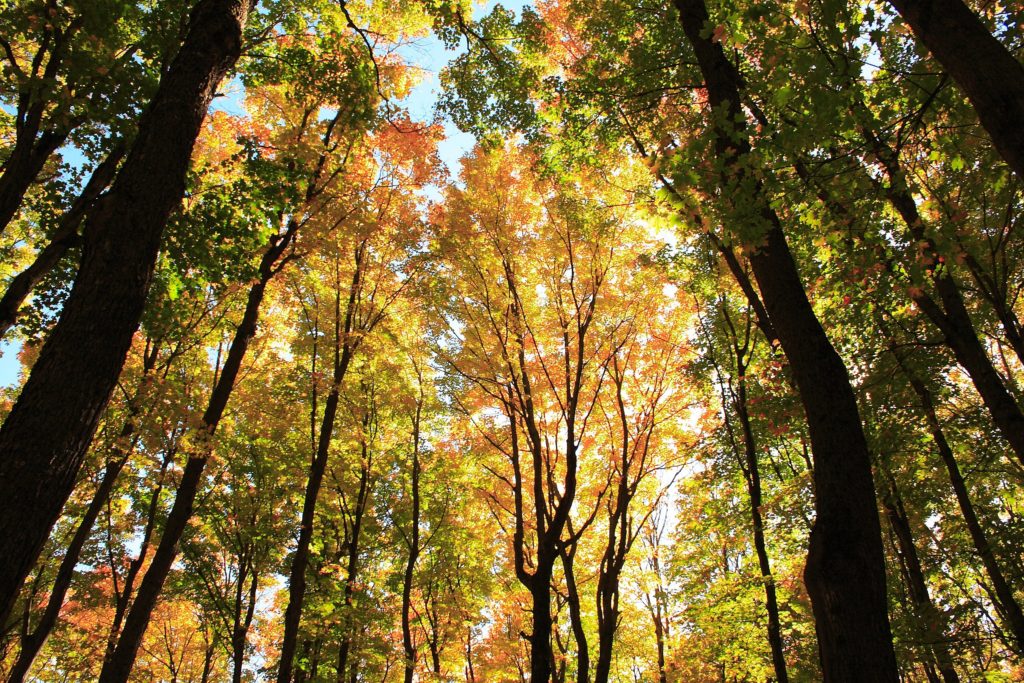
We’re on to our list of the Top 10 Historic Sites In North Dakota. And, included among these wonderful sites are not one, but two amazing trails. At #10 on our list is the North Country National Scenic Trail.
The North Country National Scenic Trail provides visitors opportunities from bird watching to backpacking.
The History Of The North Country National Scenic Trail
The North Country National Scenic Trail (NCNST) is a network of hiking trails that stretches across seven states in the northern United States. The trail was established by the National Trails System Act of 1968 and was officially completed in 1980.
The NCNST spans over 4,600 miles and passes through diverse landscapes, including forests, wetlands, prairies, and farmlands. The trail was created to provide a recreational opportunity for hikers and to promote the preservation of the region’s natural, cultural, and historic resources.
Over the years, the NCNST has undergone several renovations and extensions, with the most recent being the addition of the Empire State Trail in New York, which was completed in 2020.
Today, the NCNST is managed by the National Park Service and is maintained by a network of local volunteers, trail organizations, and government agencies.
The trail is considered one of the premier long-distance hiking trails in the country and offers a unique opportunity for individuals to explore the natural beauty and rich cultural heritage of the North Country region.
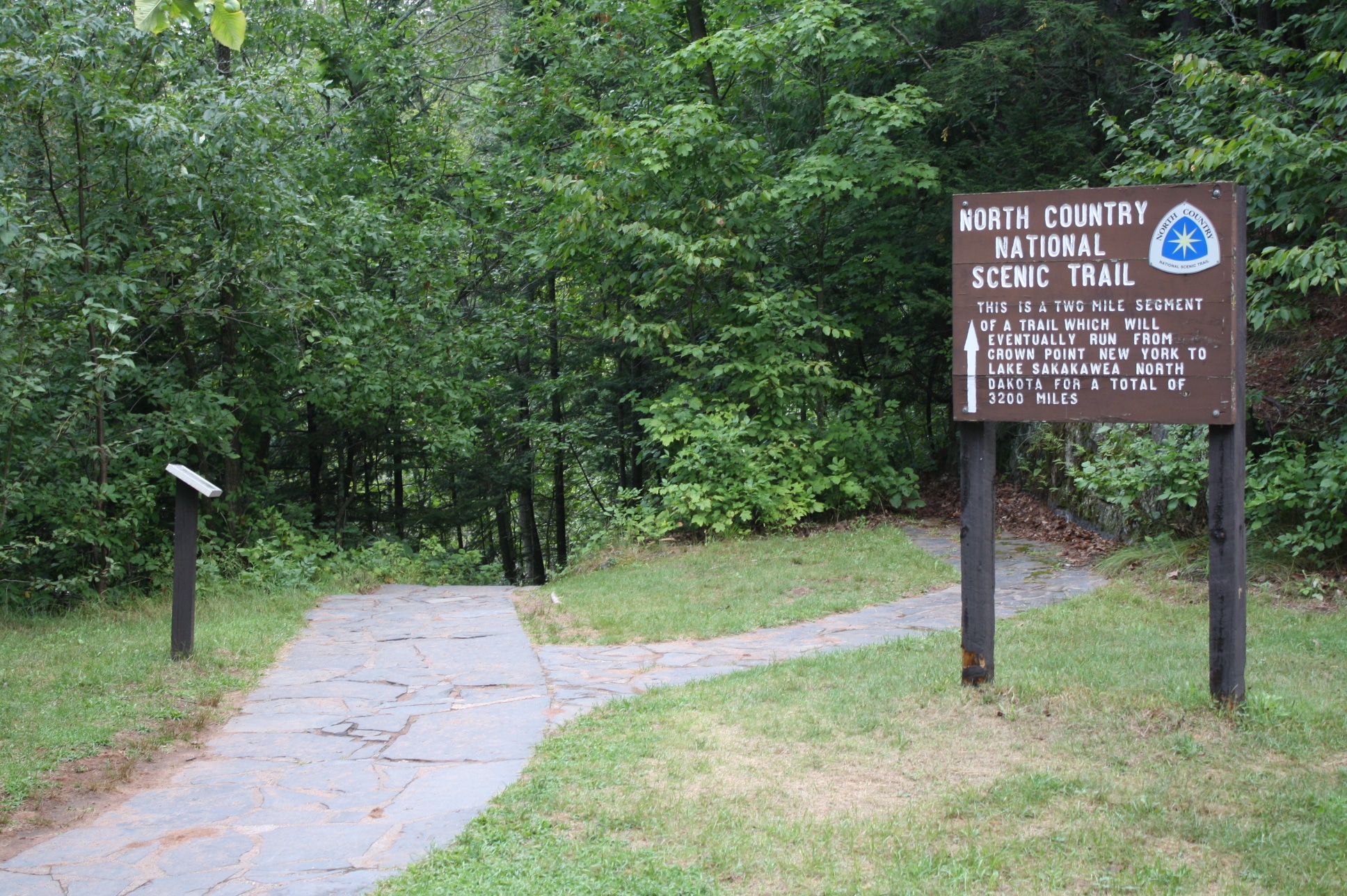
The North Country Trail In North Dakota
In North Dakota this includes longer (backpackable) segments within the Sheyenne National Grasslands, along Lake Ashtabula, along the New Rockford Canal, within Lonetree Wildlife Management Area and along the McClusky Canal.
Shorter, (day-hike) segments may be found within the Ekre Grassland Preserve, between Colfax and Walcott, the Sheyenne State Forest, at Fort Ransom State Park, from Kathryn to Clausen Springs Recreation Area, within Valley City, at Audubon National Wildlife Refuge, and at Lake Sakakawea State Park. (Source: North Dakota National Scenic Trail)
CHECK OUT: 25 Bucket List Famous Landmarks In America (MUST-SEE)
9. Chateau De Mores State Historic Site

Next up at #9 is a site which celebrates the legacy of one of the most colorful characters to ever grace the pages of North Dakota’s historic past. It’s the Chateau De Mores State Historic Site.
Located southwest of Medora, this site memorializes the life and activities in North Dakota of Antoine de Vallombrosa, the Marquis de Mores, who arrived in 1883.
Among his enterprises were a beef packing plant, a stagecoach line, a freighting company, refrigerated railway cars, cattle and sheep raising, land ownership, and a new town which he called Medora, in honor of his wife.
This 26-room, two-story frame building was built in 1883 as the summer residence of the Marquis’s family. The Chateau is now a historic house museum and contains many of the original furnishings and personal effects of the de Mores family.
Visits through the house are available during the summer months, and there is an admission charge. School and commercial bus tour group rates. Allow one hour for visit. (Source: State Historical Society of North Dakota)
Things To See
While you’re there, two other sites worth seeing include:
- De Mores Memorial Park – Located in downtown Medora, the park has a bronze statue of the Marquis de Mores donated in 1926 by his sons. The statue is surrounded by a flagstone courtyard, the result of a 1938 WPA project.
- Packing Plant/Chimney Park – Situated on the west edge of Medora, the site once contained the plant, a slaughterhouse, three icehouses, several outbuildings, a railroad spur track, and a corral. The building burned in 1907, leaving the tall, native clay brick chimney standing. A picnic area is located next to the plant.
8. Ronald Reagan Minuteman Missile Site State Historic Site

We move from a site which celebrates the eldest son of the Duke of Vallombrosa to one named in honor of America’s 40th President of the United States. At #8 on our list of the Best Historic Sites In North Dakota is the Ronald Reagan Minuteman Missile Site State Historic Site.
According to the Miller Center, Ronald Wilson Reagan was a transformational President.
His leadership and the symbiotic relationship he forged with Soviet leader Mikhail Gorbachev during their four summit meetings set the stage for a peaceful resolution of the Cold War.
As the Soviet Union disappeared into the mists of history, Reagan’s partisans asserted that he had “won” the Cold War. Reagan and Gorbachev more prudently declared that the entire world was a winner.
Reagan’s economic legacy is mixed. On the one hand, tax reduction and a tightening of interest rates by the Federal Reserve led to a record period of peacetime economic growth. On the other, this growth was accompanied by record growth in the national debt, the federal budget deficit, and the trade deficit.
Among a 2021 Survey of Historians commissioned by C-Span, Ronald Reagan ranked in the Top 10 finishing at the #9 spot just behind John F. Kennedy and ahead of Barack Obama.
Things To Do & See At The Ronald Reagan Minuteman Missile Site State Historic Site
The Ronald Reagan Minuteman Missile State Historic Site is made up of two facilities that tell the story of the Cold War in North Dakota: the Oscar-Zero Missile Alert Facility and the November-33 Launch Facility.
They were part of the 321st Missile Wing, a network of intercontinental ballistic missile launch sites around the Grand Forks Air Force Base. The site is the last intact launch control center, with the top-side of the November-33 missile facility still in place.
Visitors to Oscar-Zero can take guided tours of the topside facilities to learn about daily life at the facility and also have the option of touring the underground Launch Control Equipment Building and Launch Control Center.
Behind the concrete blast door, they will see the equipment used by missile crews to launch nuclear missiles and learn about the US strategy of nuclear deterrence.

7. Fort Abraham Lincoln

We’re not finished with U.S. Presidents just yet. We have two more to go and one of them is considered by many historians to have been the greatest of all time. At #7 on our list of the Best Historic Sites In North Dakota is Fort Abraham Lincoln.
In 2021, C-SPAN asked a group of distinguished presidential historians to rank our nation’s presidents from worst to best.
At the top of their list, with a total score of 897 points, was Abraham Lincoln. George Washington and Franklin Roosevelt came in second and third respectively.
Why is Abraham Lincoln considered the greatest president of all time? Simply put, he saved the Union.
In the process of saving the nation, Lincoln managed to define the creation of a more perfect Union in terms of liberty and economic equality that rallied the citizenry behind him.
“His great achievement, historians tell us, was his ability to energize and mobilize the nation by appealing to its best ideals while acting ‘with malice towards none’ in the pursuit of a more perfect, more just, and more enduring Union.
-Michael Burlingame, Professor Emeritus of History
No President in American history ever faced a greater crisis and no President ever accomplished as much.”
Connecticut College
Lincoln Transformed The Presidency
Lincoln transformed the Presidency. He remade the president’s role as commander in chief and as chief executive into a powerful new position. In the process, he imbued the office with broader powers by making it supreme over both Congress and the courts.
His detractors argued then and now that he took actions which were unconstitutional such as suspending the writ of habeas corpus.
For Lincoln, however, it made no sense “to lose the nation and yet preserve the Constitution.” No President in American history ever faced a greater crisis and, in saving the Union, no President ever accomplished as much.
If you’re interested in learning more about the life and times of America’s 16th President then I recommend: Abraham Lincoln: The Prairie Years & The War Years (Six Volume Set) by Pulitzer-prize winning author Carl Sandburg.
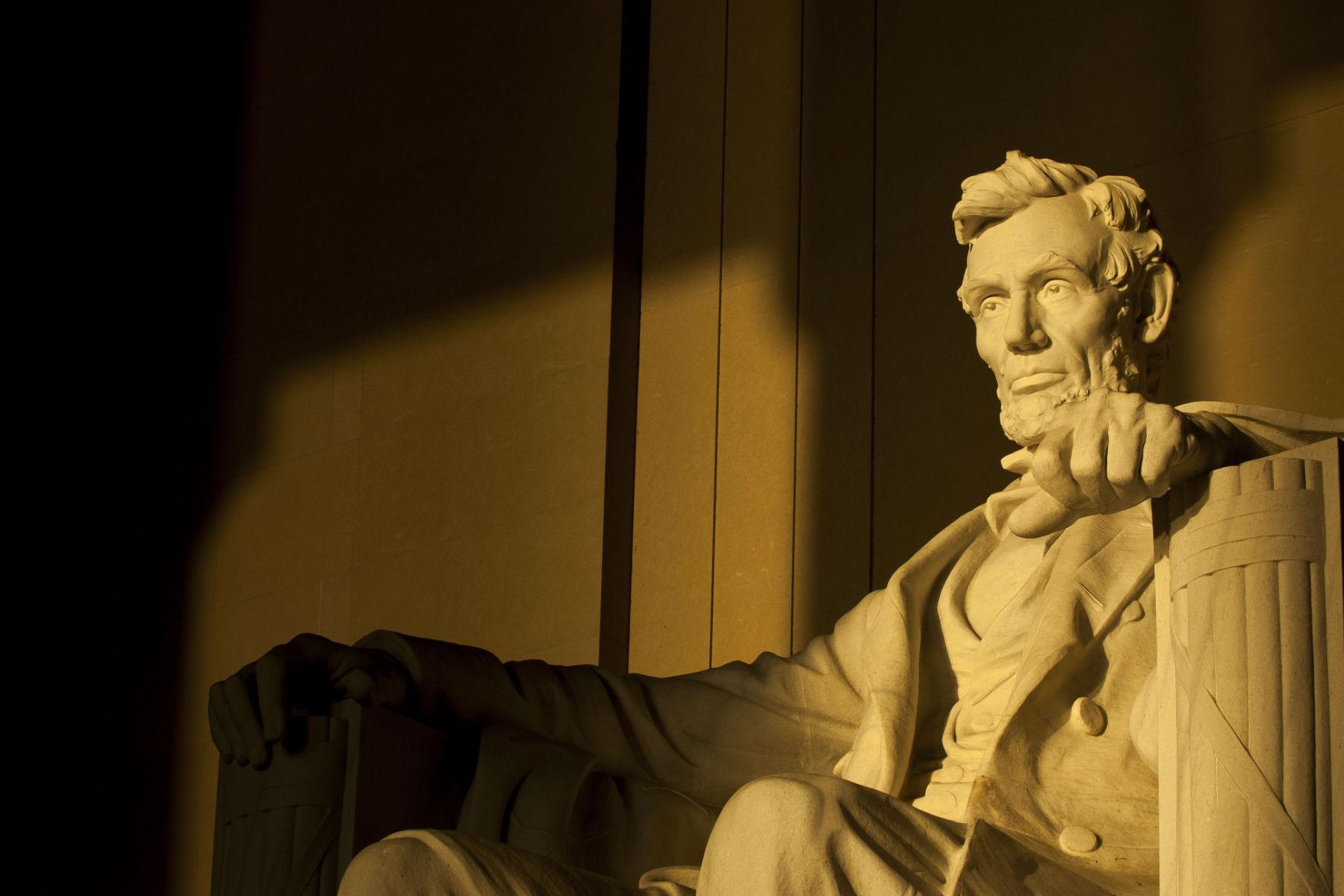
Things To See & Do At Fort Abraham Lincoln
Fort Abraham Lincoln State Park is the oldest state park in North Dakota. Visitors will enjoy a variety of unique adventures while learning about the park’s cultural, historical and natural influences.
While there, I recommend the following activities:
- Check out the wonderful exhibits which provide a fascinating history of the fort.
- There are six reconstructed earth lodges. Go inside one to see how the Mandan Indians lives.
- Tour the home of George Custer who actually lived on the property. You can learn about how he lived and how he died.
- Look out from a blockhouse where you’ll get a great view of the post and the surrounding countryside.
- And if you’re feeling particularly adventurous then spend the night in one of the cabins or tipis on the property.

6. Lewis & Clark National Historic Trail
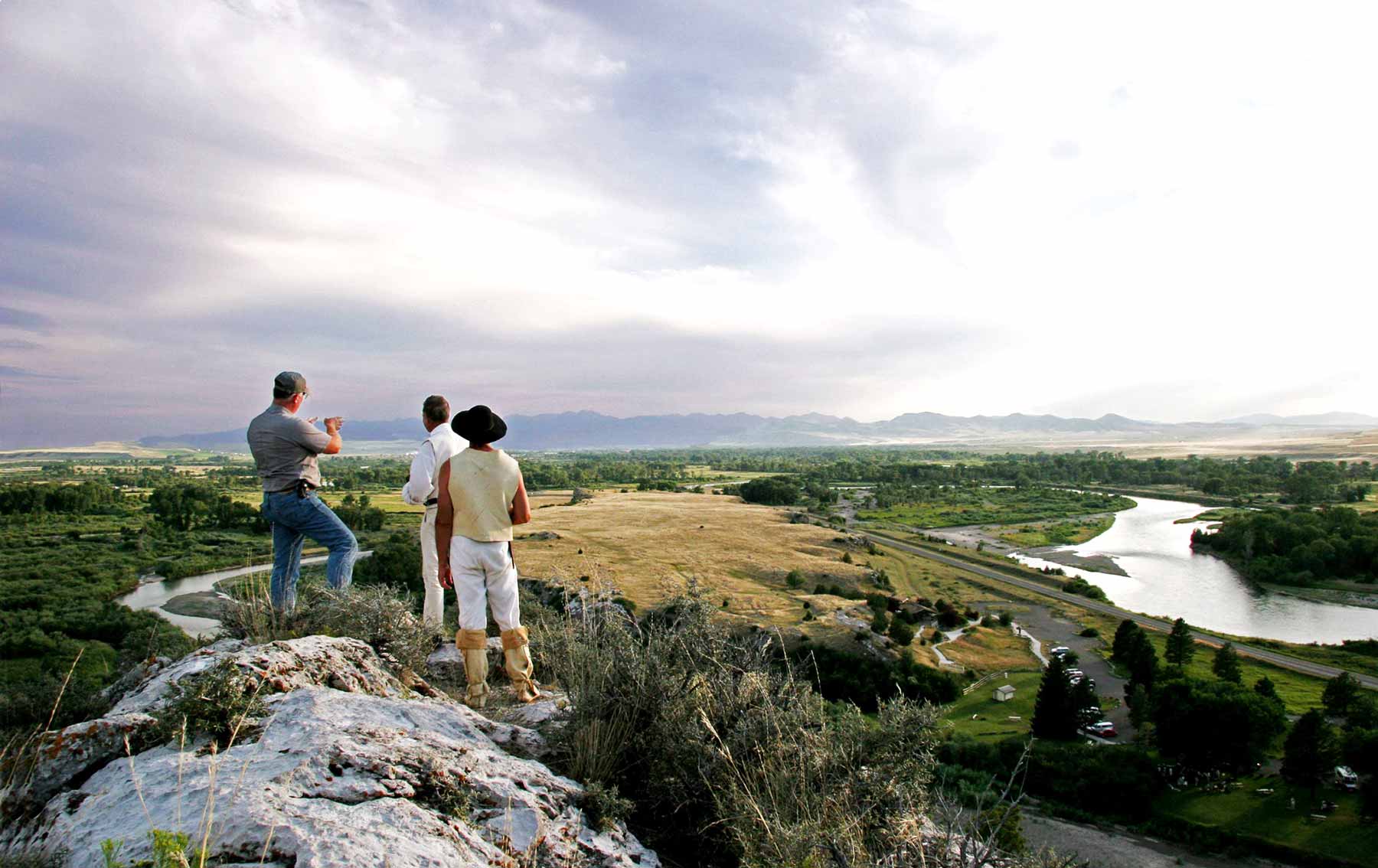
We’re on to our other famous national historic trail. At #6 on our list of the Best Historic Sites In North Dakota is the Lewis & Clark National Historic Trail.
The Lewis & Clark National Historic Trail commemorates the journey of the Lewis and Clark Expedition, led by Meriwether Lewis and William Clark, which took place from 1804 to 1806.
The expedition was commissioned by President Thomas Jefferson and tasked with exploring the western portion of the Louisiana Purchase, which the United States had acquired from France. The goal of the expedition was to find a water route to the Pacific Ocean and to document the plants, animals, and indigenous peoples of the region.
The Lewis and Clark Expedition traveled over 8,000 miles, crossing the Great Plains and the Rocky Mountains, before reaching the Pacific coast.
The journey was extremely difficult and required the two leaders and their team to navigate treacherous terrain and waterways, as well as forge relationships with various Native American tribes. Despite the challenges, the expedition was a success and provided valuable information and knowledge about the western portion of the United States.
Things To Do On The Trail
The Lewis & Clark National Historic Trail was established in 1978 by Congress and covers over 3,700 miles, following the routes of Lewis and Clark as closely as possible.
The trail is managed by the National Park Service and is considered one of the country’s premier hiking and recreational trails.
Today, visitors can hike, bike, or drive along the trail and learn about the history and culture of the region, as well as the legacy of Lewis and Clark.

Top 5 Historic Sites In North Dakota
5. Fort Totten Historic Site

We’re on to our Top 5 Historic Sites In North Dakota. At #5 is Fort Totten Historic Site.
Located on the southeastern edge of the town of Fort Totten, the Fort Totten Historic Site preserves a military post built in 1867 and used continuously as a military reservation until 1890 when it became a boarding school for Indian children.
The brick buildings, which replaced an earlier log fort, appear much as they did when built of locally made brick in 1868. Original buildings are now being used to house museum exhibits.
Fort Totten served American Indian policy from 1867 to 1959. Constructed as a military post, it became an Indian boarding school, Indian health care facility, and a reservation school.
Initially, the fort policed the surrounding reservation. The soldiers enforced the peace, guarded overland transportation routes, and aided Dakota (Sioux) who lived near Devils Lake after 1867.
Fort Totten was decommissioned in 1890.
The Fort Become The Property Of The Bureau Of Indian Affairs
On January 5th, 1891 the former post became the property of the Bureau of Indian Affairs. The post served as an Indian boarding school until 1935. Academic and vocational training prepared Indian youth for life off the reservation. Enrollment sometimes topped 400.
For four years (1935-1939) the site was used as Tuberculosis Preventorium run by the Federal Government. This successful program was aimed at small groups of Dakota children who had or were susceptible to Tuberculosis. They were taught basic studies as well as being treated for Tuberculosis.
When this program was shut down, the site returned to being a Community and Day School for the Reservation with gradually more input and control being given to the Tribal leaders of the Reservation.
Fort Totten became a North Dakota State Historic Site in 1960 and was listed on the National Register of Historic Places in 1971. (Source: State Historic Society of North Dakota)
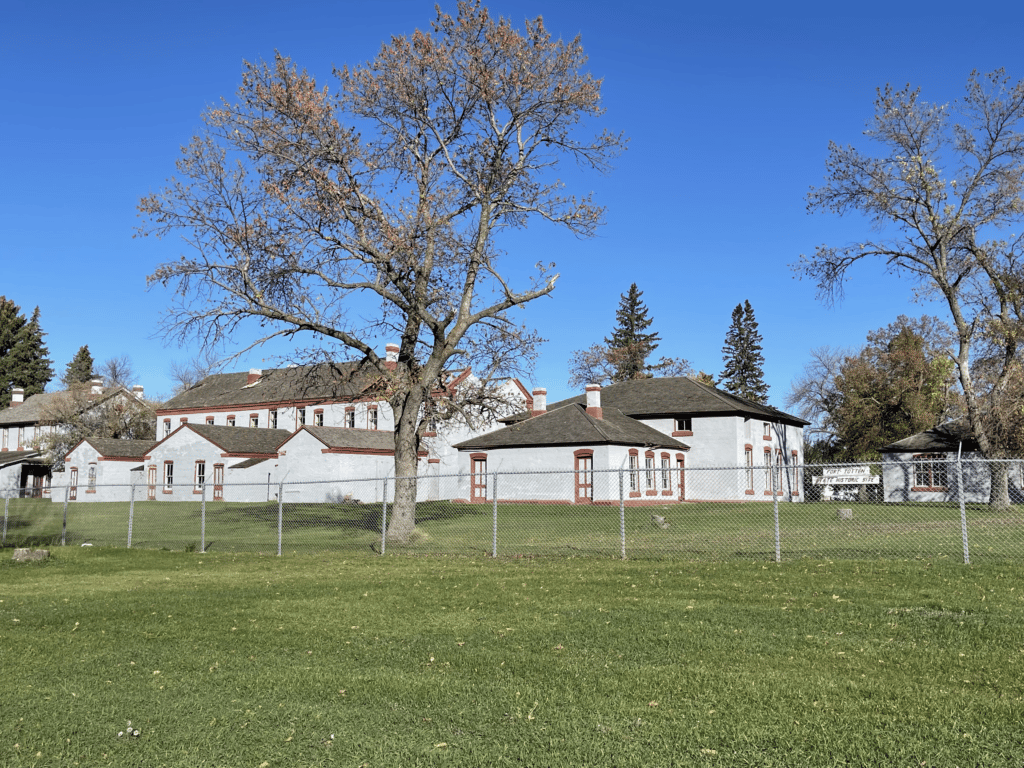
Things To Do At Fort Totten
The primary buildings at the site have been preserved, giving visitors a realistic historical experience.
Visitors to this site can explore the 17 original buildings that once rang with the jingle of cavalry harness and the shouts of playing children.
The brick buildings, which replaced an earlier log fort, appear much as they did when built of locally made brick in 1868. Original buildings are now being used to house museum exhibits.

4. Knife River Indian Villages National Historic Site
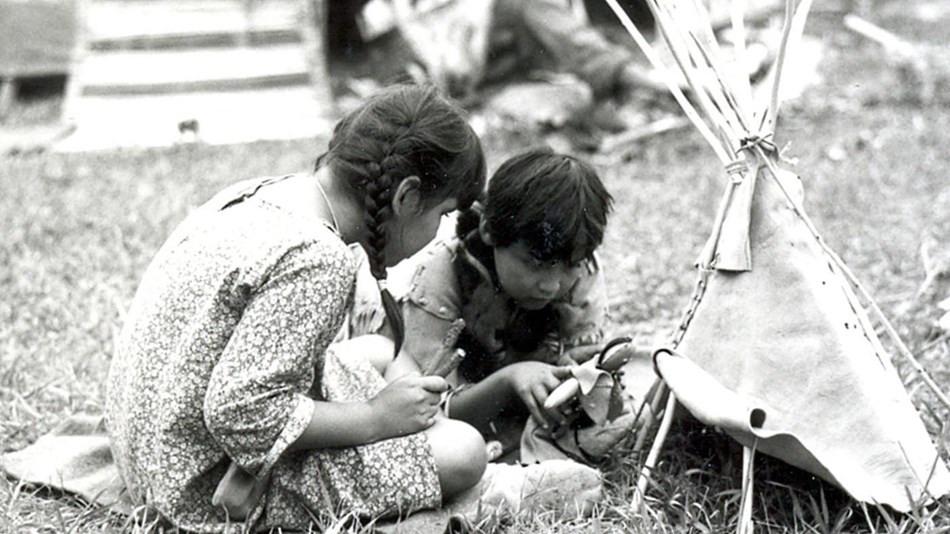
It’s on to our “Final Four.” In the #4 position is a place where visitors have an incredible opportunity to explore the lives of the Northern Plains Indians on the Upper Missouri. Welcome to the Knife River Indian Villages National Historic Site.
We recommend beginning your adventure by watching the 15 minute orientation film Maxidiwiac about the life of Buffalo Bird Woman who lived at the Knife River Indian Villages.
Buffalo Bird Woman, a Hidatsa Indian born about 1839, was an expert gardener. Following centuries-old methods, she and the women of her family raised huge crops of corn, squash, beans, and sunflowers on the rich bottomlands of the Missouri River in what is now North Dakota.
When she was young, her fields were near Like-a-fishhook, the earth-lodge village that the Hidatsa shared with the Mandan and Arikara. When she grew older, the families of the three tribes moved to individual allotments on the Fort Berthold Indian Reservation.
“This that I now tell is as I saw my mothers do, or did myself, when I was young. My mothers were industrious women, and our family had always good crops; and I will tell now how the women of my father’s family cared for their fields, as I saw them, and helped them.”
-Buffalo Bird Woman
There’s A Wonderful Museum Too
You will also find a wonderful museum where you will learn about the history and culture of the Hidatsa people. The exhibits feature artifacts recovered from the village sites as well as decorative arts of Northern Plains Indians.
Outside visitors will see a full scale reconstructed Earthlodge, Hidatsa garden, and village sites.
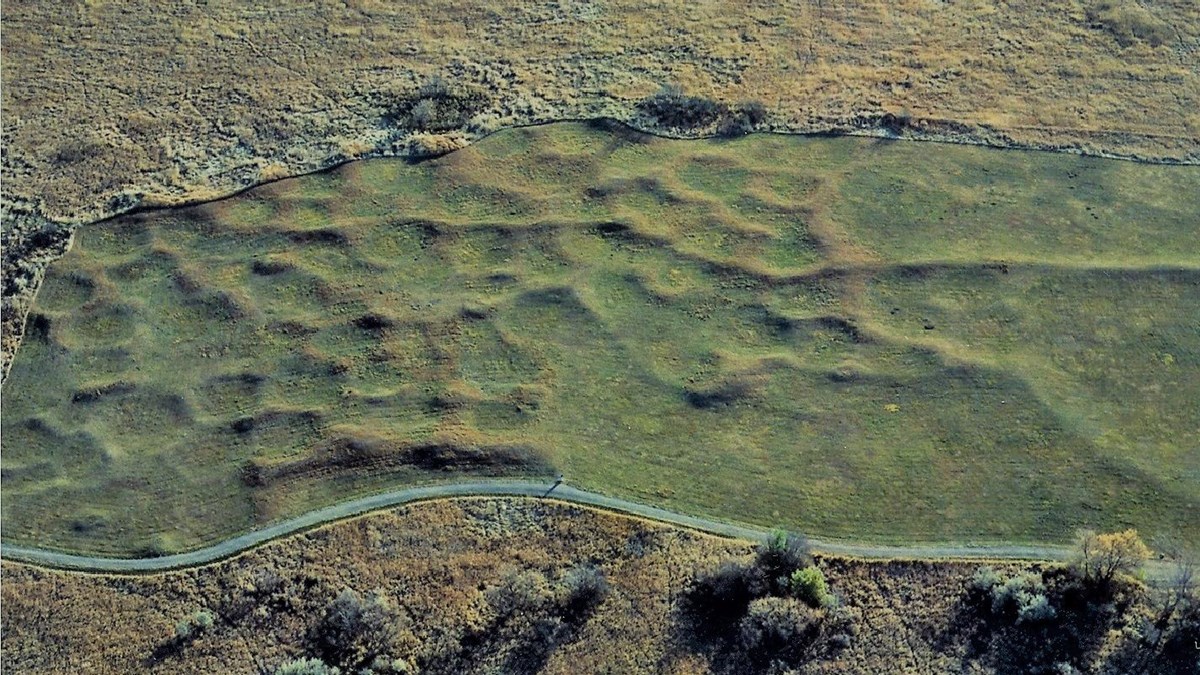
And if you love a good walk along a beautiful trail (and who doesn’t) then there’s the Village Trail which is 1.3 miles. Along this trail you will see the remains of the Awatixa Xi’e Village (Lower Hidatsa Site) and Awatixa Village (Sakakawea Site).
There is a loop at the second village site that includes a walk along the Knife River. (Source: NPS)
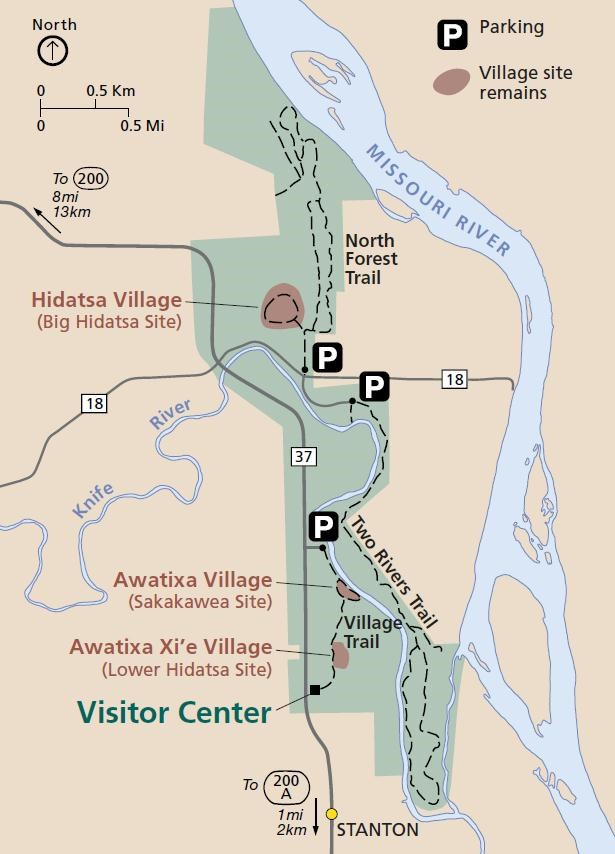
3. Fort Union Trading Post National Historic Site
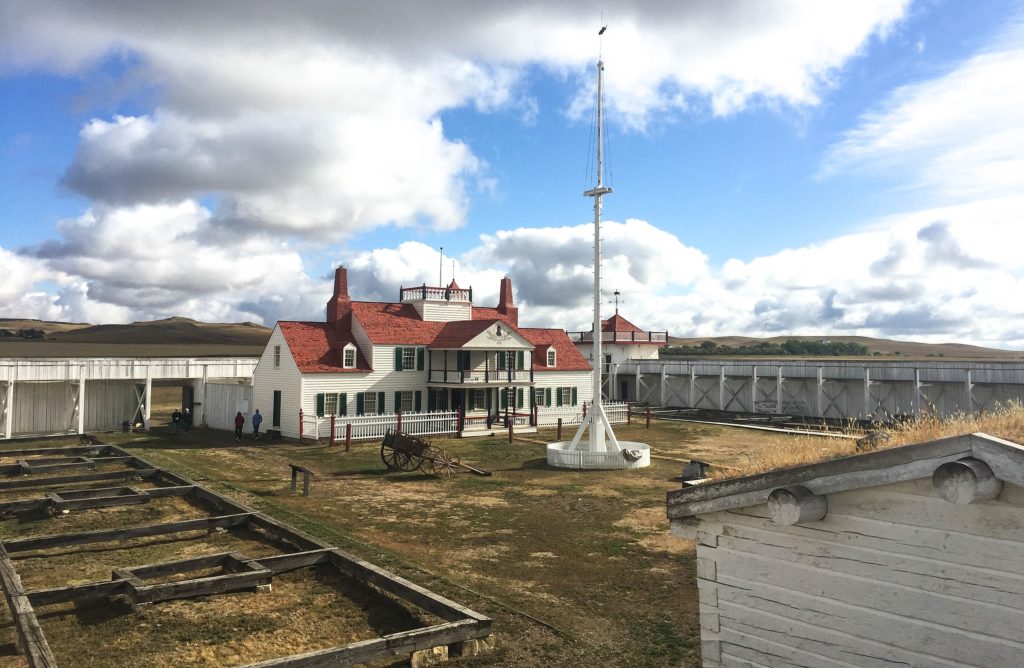
Our #3 Historic Site In North Dakota is a historical reconstruction of one of the most important fur trading posts on the Upper Mississippi. It’s Fort Union National Historic Site.
Fort Union Trading Post National Historic Site is located in western North Dakota, near the confluence of the Yellowstone and Missouri rivers. The site was established in 1828 by John Jacob Astor’s American Fur Company as a trading post and was used for nearly 40 years as a central hub for the fur trade in the Upper Missouri River region.
During the 1830s and 1840s, Fort Union became the most important trading post in the Upper Missouri region. It served as a supply depot and gathering place for fur trappers and Native American tribes. At its peak, the fort was the largest and busiest trading post on the Upper Missouri River, with hundreds of traders, trappers, and Native Americans coming and going each day.
It Was a Multi-Ethnic Community
Fort Union was unique in that it was a multi-ethnic community where traders and Native Americans lived and worked together. The fort was known for its peaceful and friendly atmosphere, which was essential for successful trading.
In addition to furs, Fort Union traded in a variety of goods, including guns, blankets, beads, and food. The traders used the Missouri River as a highway to transport goods to and from the fort. The traders also developed a system of credit with the Native Americans, allowing them to trade for goods without immediate payment.
The fort was an essential part of the economic and social life of the region, and it played a significant role in the westward expansion of the United States. However, by the 1860s, the fur trade had declined, and Fort Union was no longer profitable. The fort was closed in 1867, and most of the buildings were dismantled.
Fort Union’s Trade House Today
You have a wonderful opportunity to travel back in time with a visit to Fort Union’s Trade House. A costumed Park Ranger will explain how this place was the fort’s most important building.
I have to give these incredible Park Rangers a shout out. Not only are they friendly and helpful, but they get dressed up in these amazing costumes and go all out to make you believe they were actually there back in the day.
Trading was the name of the game back in the day. American Fur Company Traders and the fort’s tribal trade partners, the Assiniboine, Crow, Blackfeet, Plains Cree, Plains Ojibwa, Mandan, Hidatsa, Arikara, Lakota, and others, all entered this space for one purpose, the act of trade.
So it was more than just a store on the Upper Missouri River.
The Trade House was where diplomatic negotiations transpired, families reconnected, stories were shared, and feasts were held. It was truly a happening place.
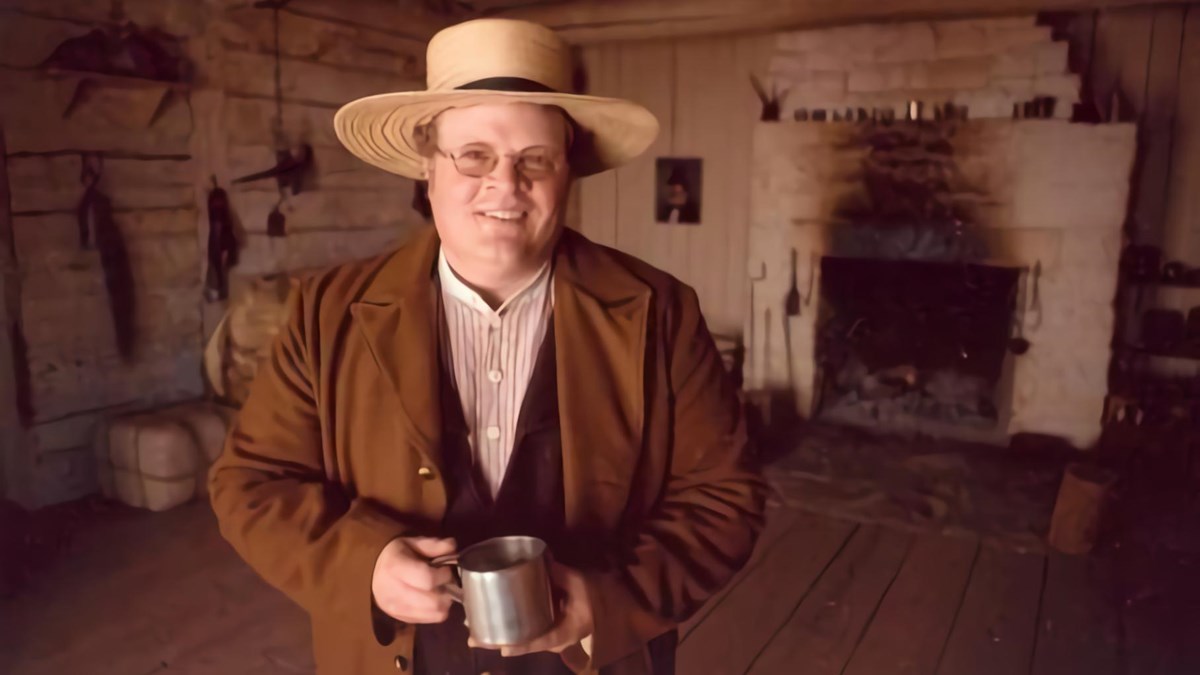
CHECK OUT: A Brief (& Informative) History Of America’s Park Rangers
There’s A Wonderful Bookstore & Gift Shop Too
So many books, so little time. I enjoy researching and writing articles for the Pattiz Brothers who happen to be my sons. And the best part of all is that they pay me in books! It works for them and it works for me too.
The only one it doesn’t work for is my wife who tells me that we’re running out of bookshelves, but I digress . . .
Nevertheless, if you love a good book or gift then check out their wonderful bookstore and gift shop.
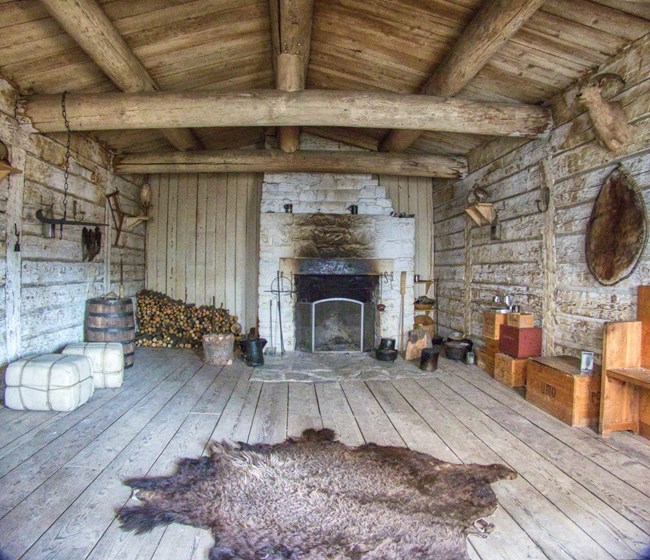
2. North Dakota Heritage Center & State Museum

In the runner-up spot on our list of the Best Historic Sites In North Dakota at #2 is the North Dakota Heritage Center & State Museum.
It’s North Dakota’s largest museum. It features four museum galleries tracing the state’s rich history from its earliest geologic formation 600 million years ago to today.
Visitors to this site will experience the beautiful museum spaces showcasing the people, landscape, and current and future development of North Dakota.
There are some fascinating exhibits which tell the stories of North Dakota from its earliest geologic formation to contemporary times.
There are also three permanent galleries which are arranged chronologically, with tracks and prints in the floor and iconic objects in the hallway providing cues to time periods.

1. Theodore Roosevelt National Park
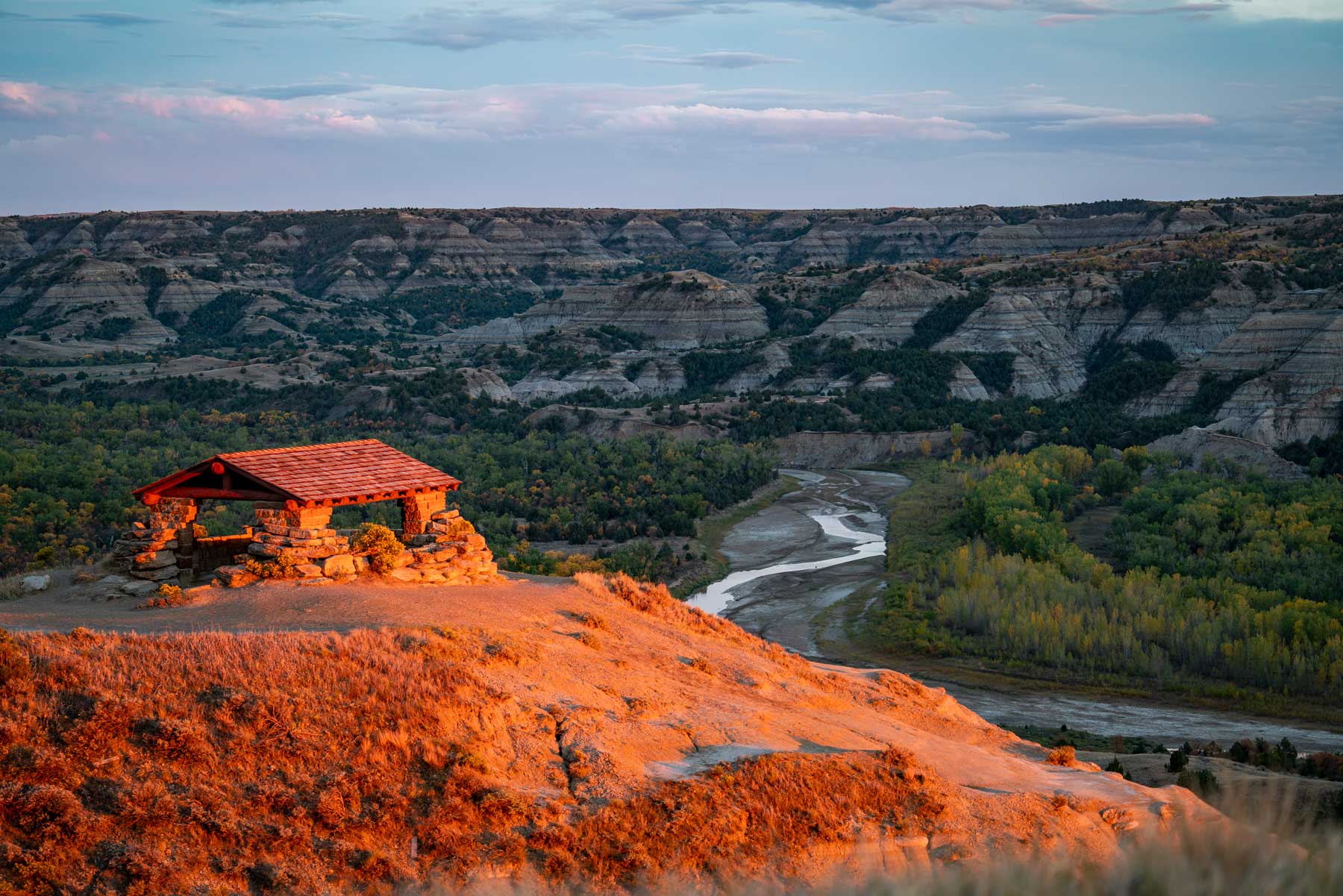
While we’re More Than Just Parks, as our #1 Historic Site In North Dakota we selected one of our favorite national parks – Theodore Roosevelt National Park.
Theodore Roosevelt National Park celebrates the man whom many regard to be our nation’s greatest conservation president. It is the ONLY national park that is named after a President of the United States.
Encompassing over 70,000 acres, the park boasts an stunning array of breathtaking badlands, snaking rivers, diverse wildlife including our national mammal, and colorful canyons.
This is a land teeming with rugged beauty, massive mammals, and epic overlooks.
“It was here that the romance of my life began.”
-theodore roosevelt
Things to Know Before You Visit
Entrance Fees: You can expect $30 per vehicle but if you plan on visiting more than one park this year we suggest you go ahead and purchase the America the Beautiful Pass (which can be found at the entrance gates to most national parks). This pass gets you into all National Parks, Forests, Monuments, and more including 2,000 sites for free after a one time $79 fee.
Leave No Trace: At More Than Just Parks we’re big fans of Leave No Trace, here at MTJP. Want to learn more? Read about the seven principals of Leave No Trace here.
Dogs are not allowed on trails in most national parks due to their potentially disruptive presence with the natural ecosystem. The basic rule is they are allowed where cars can go so be sure to check the rules before bringing along your furry friend.
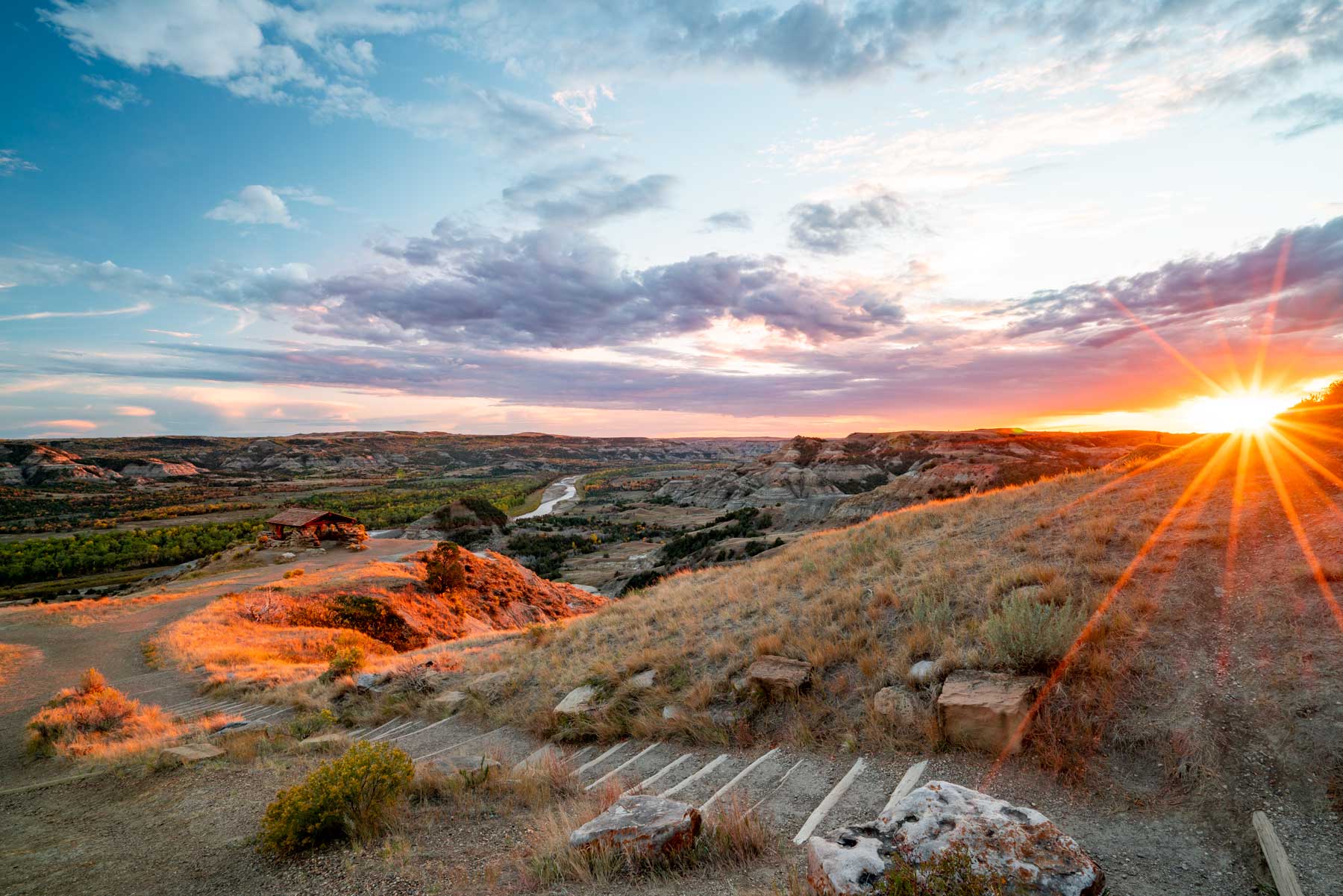
Interesting Statistics
- Location: Medora, North Dakota
- Established: November 10, 1978
- Size: 70,446 acres
- Native Lands: Arikara, Blackfeet, Chippewa, Cree, Crow, Gros Ventre, Hidatsa, Mandan, Rocky Boy, Sioux
- Visitors: 749,389 (in 2018)
- Entrance Fees: $30 per vehicle; $70 annual pass (or $80 for America the Beautiful Pass)
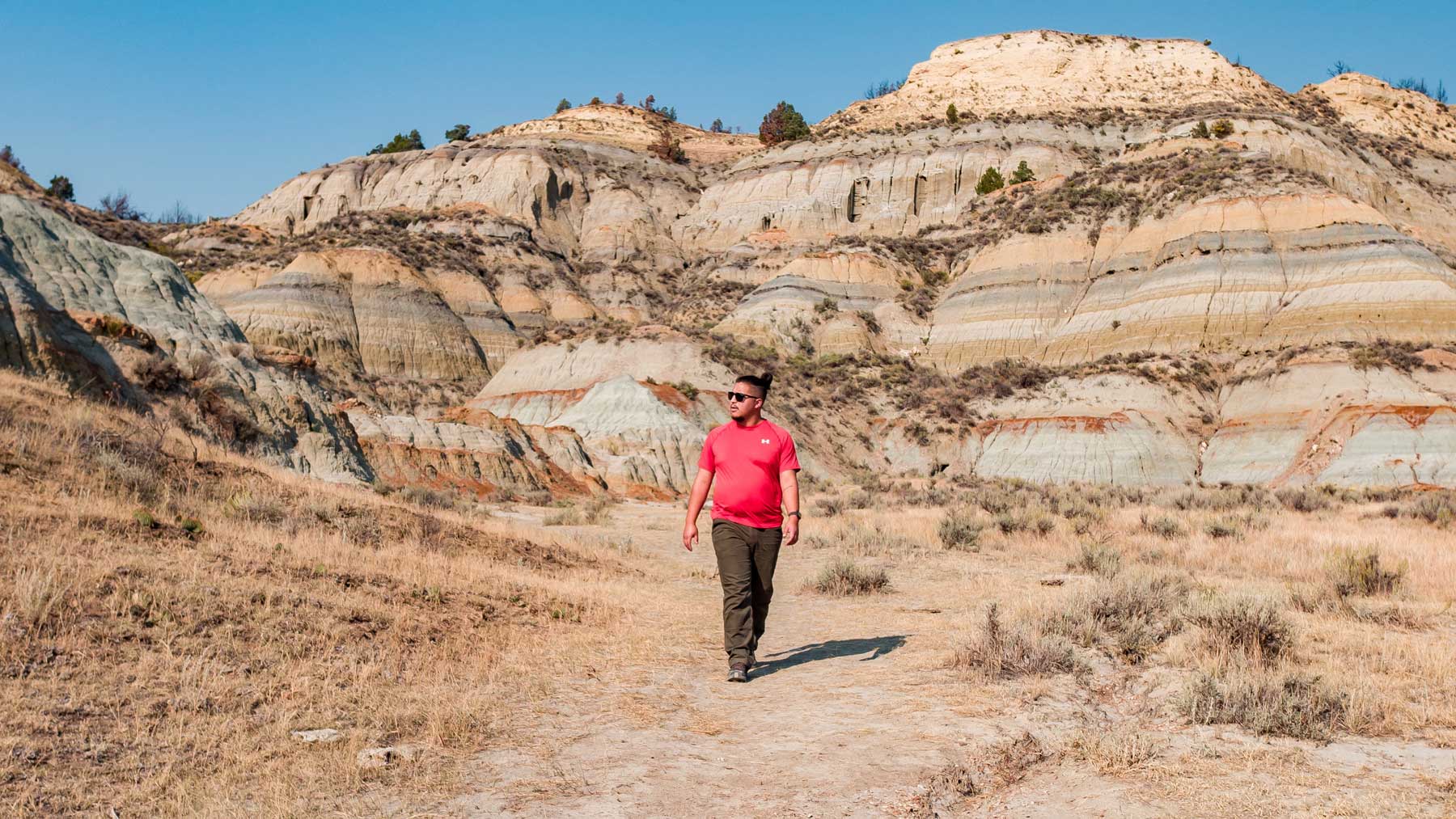
Maps
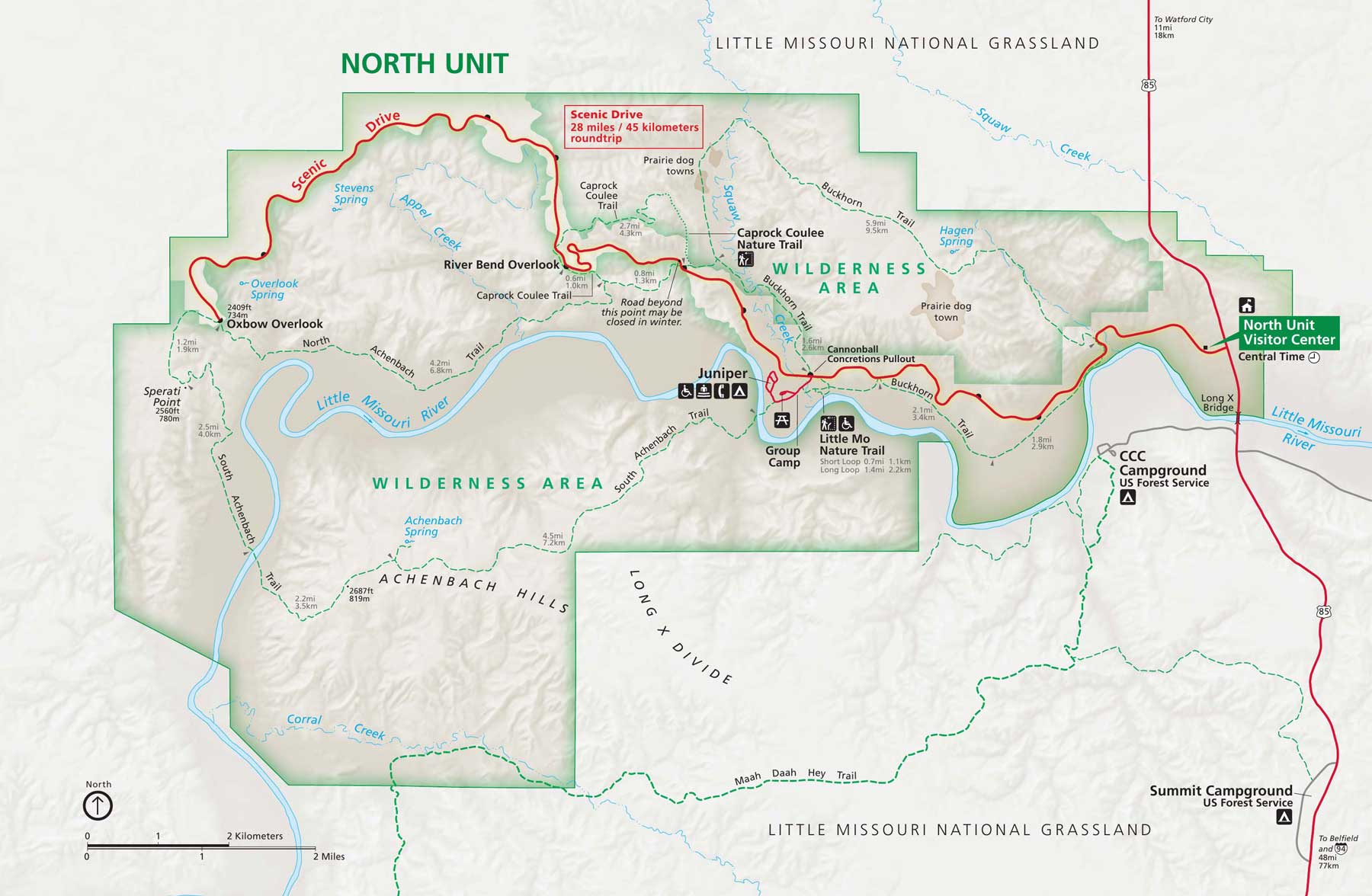
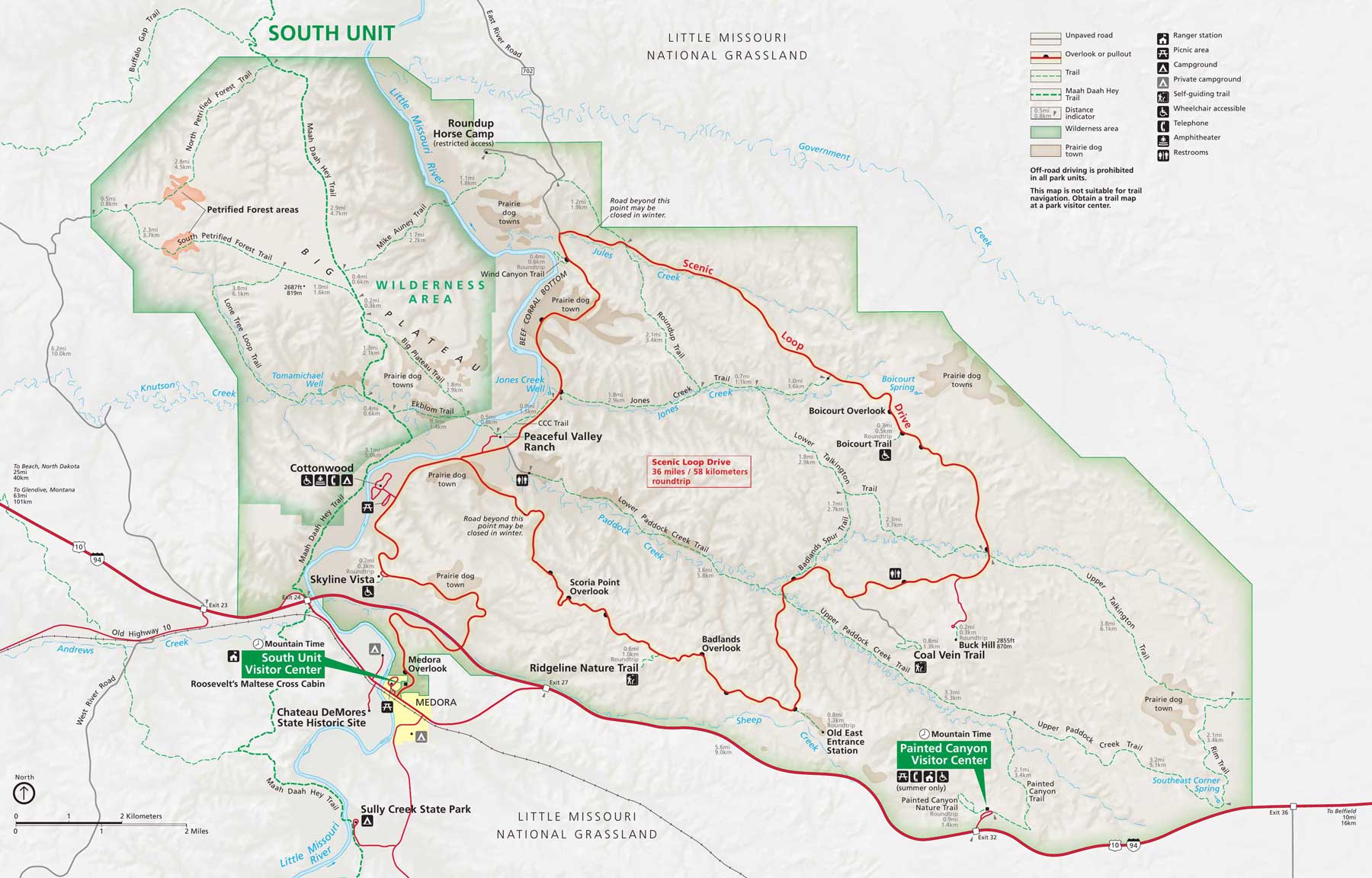
History
According to the National Park Service the area of land which now comprises the park was once a swampy wetland full of cypress like trees, fish, and reptiles (about 65 million years ago).
Eventually ash from volcanic eruptions filled the swamps with sediment that was compacted over millions of years into different colored rock layers (I wonder what color our time will be…) and buried.
An ice age came and formed massive glaciers over much of North America. When the glaciers began to melt away the Little Missouri River was formed. As the river began eroding away the softest sediment it left behind amazing formations revealing millions of years of geological history.
This set the stage for the earliest known human inhabitants of the area – Native Americans.

Native Peoples in the Badlands
According to the National Parks Conservation Association, the Hidatsa and Mandan tribes used the lands within the park as bison hunting and eagle trapping grounds. The Arikara, Blackfeet, Chippewa, Cree, Crow, Gros Ventre, Rocky Boy, & Sioux tribes are also associated with these lands.
The Lakota referred to the now park area as “mako sica” (mah-koh see-kah) which was translated by Europeans as “badlands.”
Theodore Roosevelt In The Badlands
In 1883, at the age of 24, young Theodore Roosevelt was lured in to the Badlands by an acquaintance promoting the area as prime ranch lands.
Excited about the prospects for an open-range cattle industry, he invested in a ranch along the Little Missouri River near Medora before returning to New York.
His aim then was to kill a bison before there were no more left on the continent and to get a taste of the real American west.
Upon arriving he was quickly mesmerized by the otherworldly landscapes and natural beauty of the area. The clean air was also a great remedy for his chronic asthma.
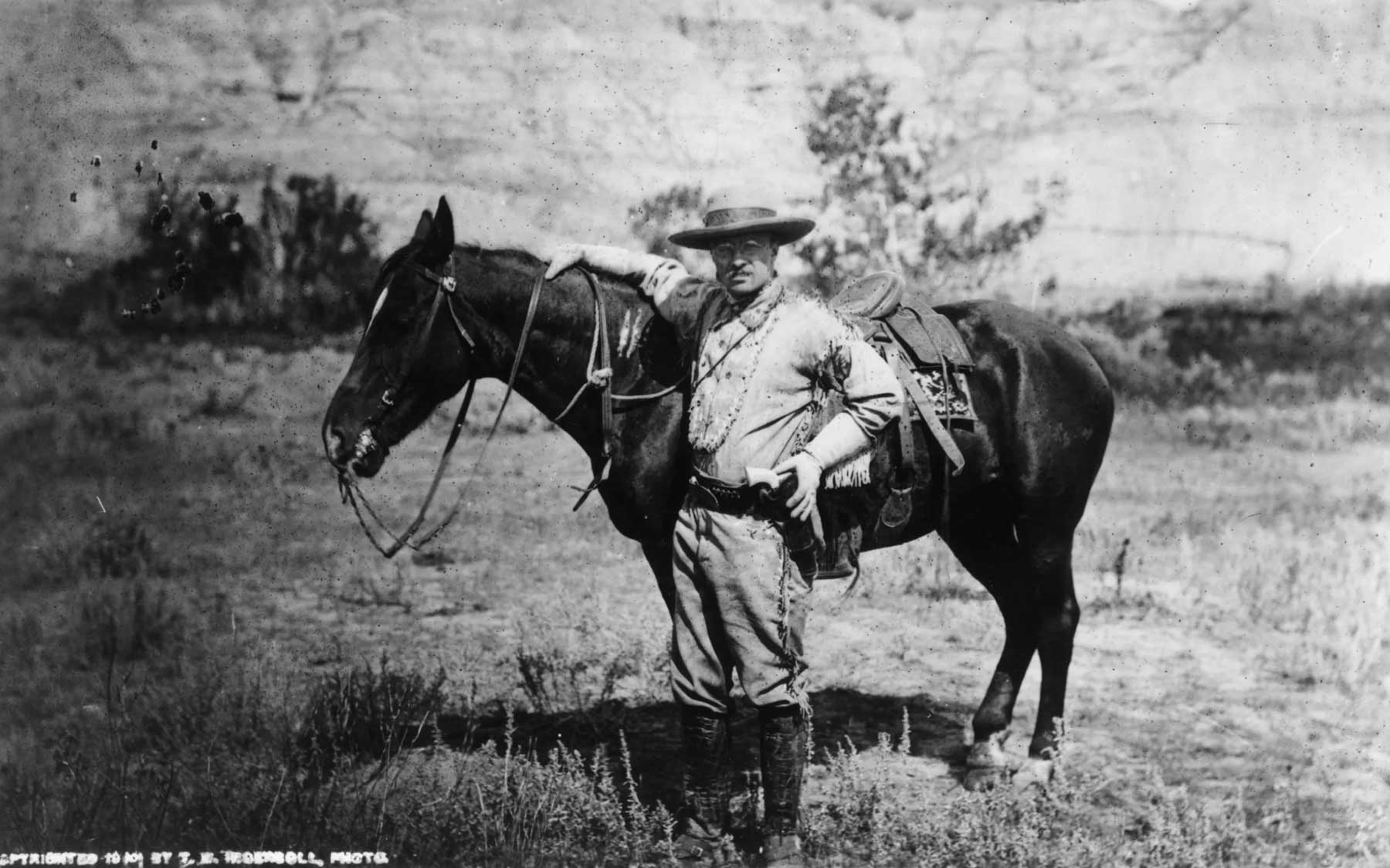
“I have always said I would not have been president had it not been for my experience in North Dakota.”
-theodore roosevelt
The Maltese Cross Cabin
After spending a few weeks in the area hunting (and killing his first bison) he decided to purchase the Chimney Butte Ranch for $14,000.
As the ranch’s official brand, the Maltese Cross was the name that the cabin Roosevelt had built on the property as a temporary home.
The cabin can still be toured today (after taking a trip to St. Louis for the world fair & Portland, Oregon for the Lewis and Clark Centennial Exposition).
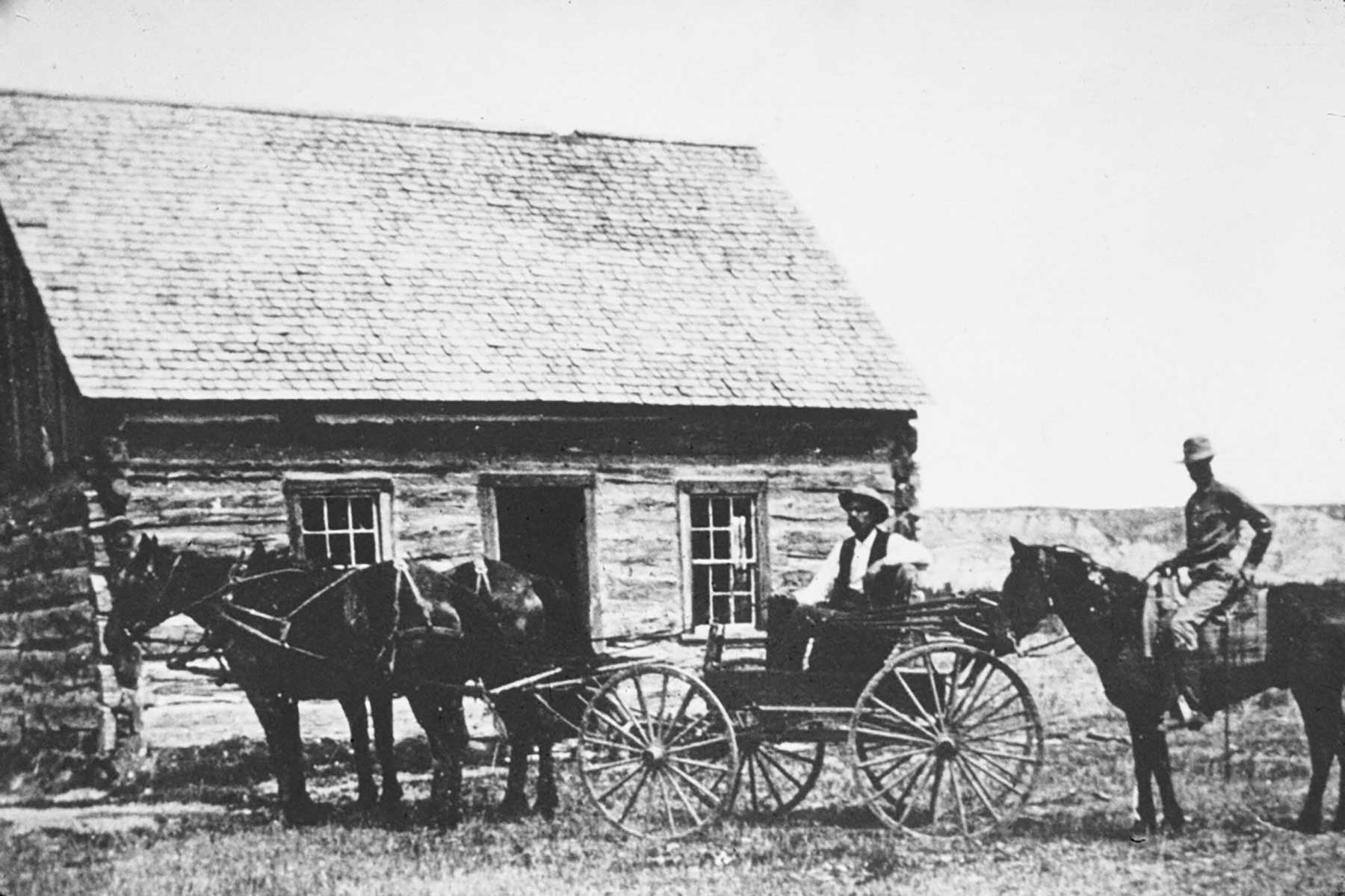
The Elkhorn Ranch
After the unexpected and tragic deaths of his wife and mother on the same day, a devastated Roosevelt returned to North Dakota in 1884 to make ranching his full-time business.
He found a ranching boom in progress in the Little Missouri River Valley. Encouraged by the success of his Maltese Cross Ranch, he purchased 1,000 head of cattle and selected a site for a second ranch. He purchased the rights for a second ranch for $400 and named it Elkhorn.
Elkhorn Ranch, about 35 miles north of Medora, became headquarters for Roosevelt’s cattle operations. Completed by the spring of 1885, the 30’ by 60’ Elkhorn Ranch house was one of the finest in the Badlands, with eight rooms and a porch on the east elevation.
This ranch, which he referred to as his “home ranch”, was where he based his cattle operations.
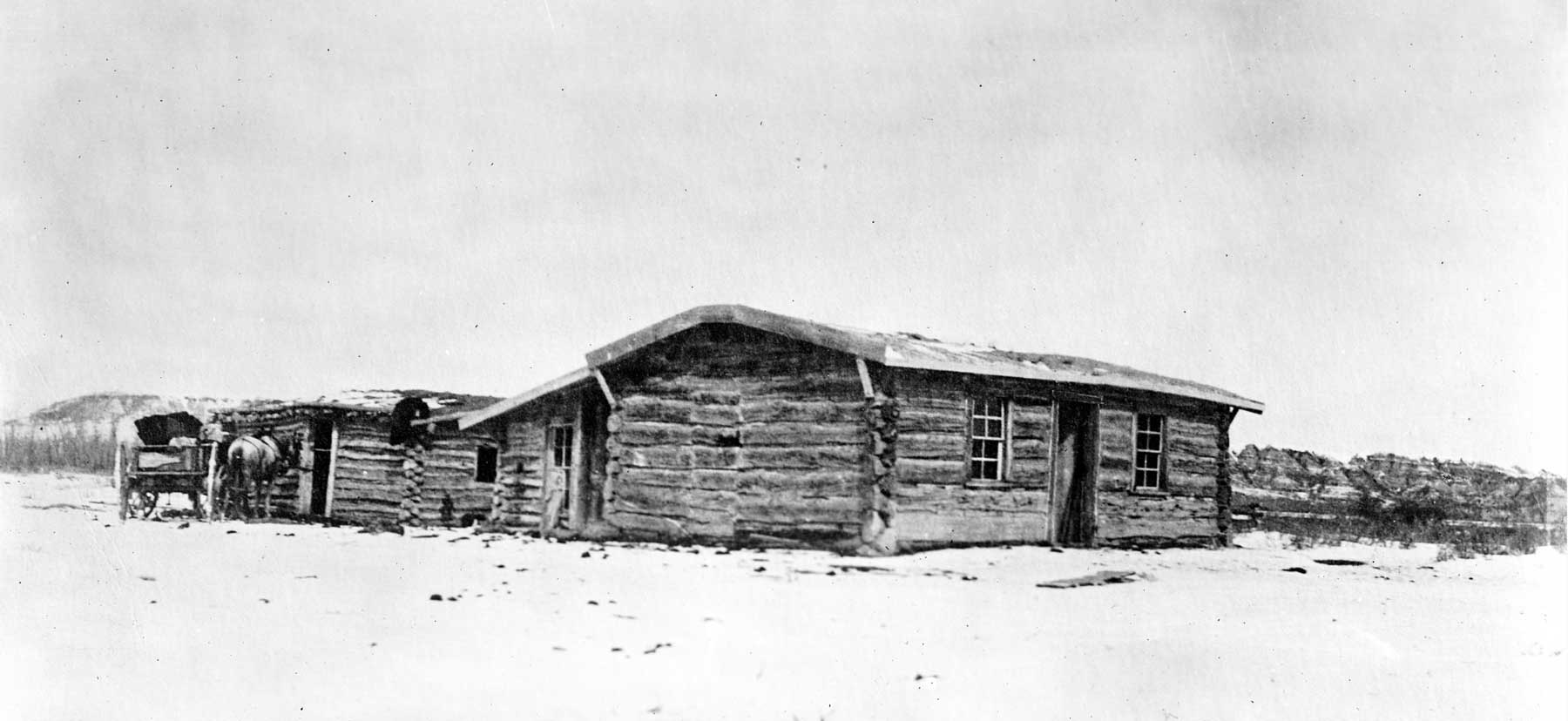
Disaster Struck
Roosevelt’s ranching business reached a peak in 1885 and 1886, but disaster struck during the winter of 1886 and 1887. More cattle already were grazing on the open range than it could support by the fall of 1886.
Winter brought heavy snows, partial thawing, and subzero temperatures that created a crust over the snow that the cattle could not break through.
When Roosevelt returned in the spring of 1887, he learned that he had lost over half his herd. By the early 1890s, he had abandoned his Elkhorn Ranch and returned to the Maltese Cross Ranch. He came back periodically to the area until 1898, but felt that open-range ranching in Dakota Territory was “doomed, and can hardly outlast the century.”
He sold the last of his stock in 1898. Roosevelt lost much of his fortune in the Badlands but never regretted the time he spent there.
The Winning Of The West
Defeated politically and running out of money after a ranch deal gone bad, Theodore Roosevelt began writing his epic history of the conquest of the American West in 1888.
He wove a sweeping drama, well documented and filled to the brim with Americans fighting Indian confederacies in the north and south while dealing with the machinations of the British, French, and Spanish and their sympathizers.
I heartily recommend Roosevelt’s multi-volume: The Winning of the West.
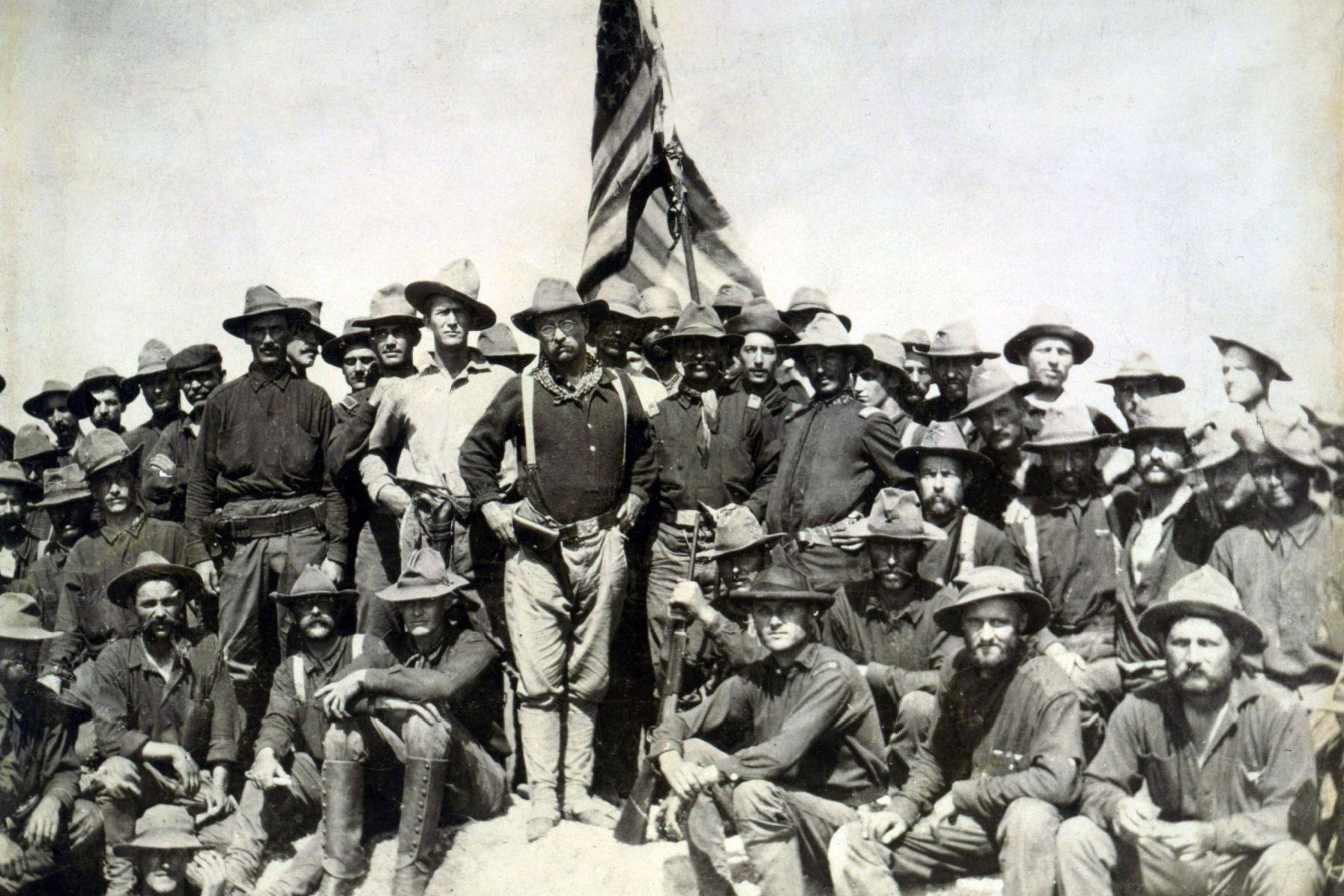
Roosevelt Returned To Medora In 1903
President Theodore Roosevelt embarked on a nine and a half week journey across the North American continent in April of 1903. The Pennsylvania Railroad Company provided a special six-car train, decorated and equipped for a 14,000 mile cross-country journey.
Roosevelt’s final stop on his cross-country tour was in Medora, North Dakota. Practically the entire population of the Badlands turned out to greet him.
Arriving after dark, Roosevelt later recalled that “the entire population of the Badlands down to the smallest baby had gathered to meet me… They all felt I was their man, their old friend; and even if they had been hostile to me in the old days when we were divided by the sinister bickering and jealousies and hatreds of all frontier communities, they now firmly believed they had always been my staunch friends and admirers.”
Roosevelt continued, “I shook hands with them all and…I only regretted that I could not spend three hours with them.” (Source: Mandan Historical Society)
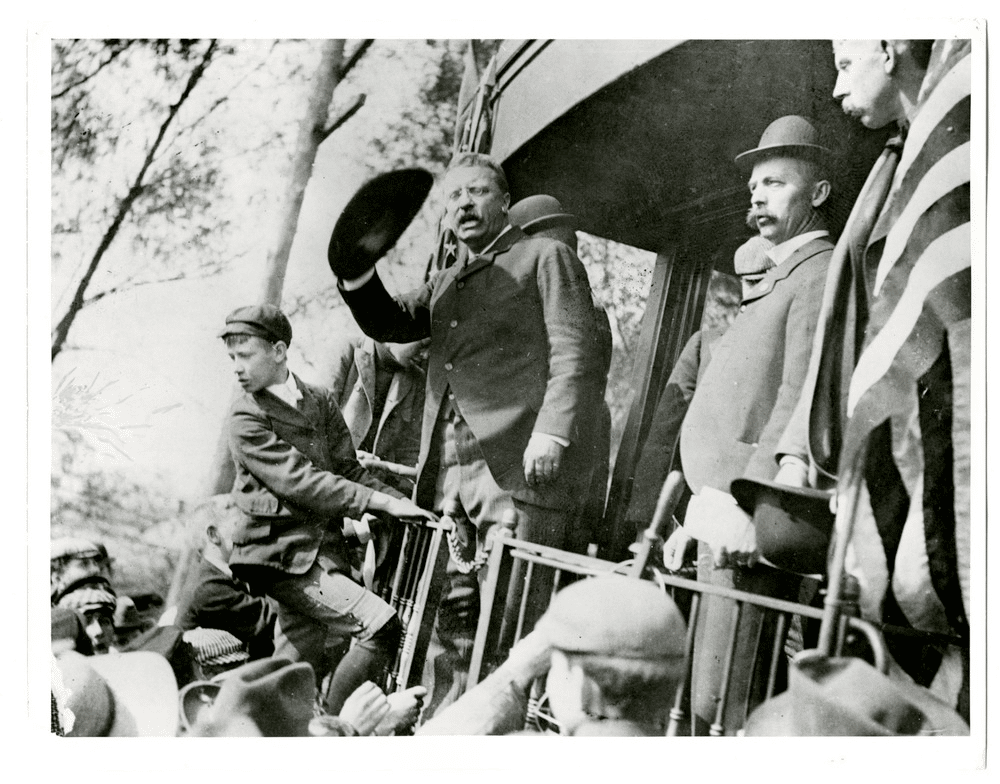
Creation Of The Park
Shortly after Roosevelt’s death in 1919 the search for a memorial location commenced and Medora was selected. An early plan called for a massive 1.2 million acre park but local ranchers complained that the land was too valuable for grazing.
In the 1930s the land dried up due to poor grazing & agricultural practices and with it came the great depression forcing ranchers to sell their land to the government on the cheap.
Little Missouri National Grasslands was established with some of those lands earmarked for a park. The CCC broke ground on what was to become two state park sites in 1934 but work stopped in 1941 with the advent of World War II.
In 1946, after congress voted down inclusion of the lands into the national park system due to not possessing the qualities befitting a national park, the land was transferred U.S. Fish & Wildlife and Theodore Roosevelt National Wildlife Refuge was created.
During the Truman administration the refuge was turned into a National Memorial Park.
Finally, on November 10, 1978 President Jimmy Carter signed into law the creation of this amazing national park.
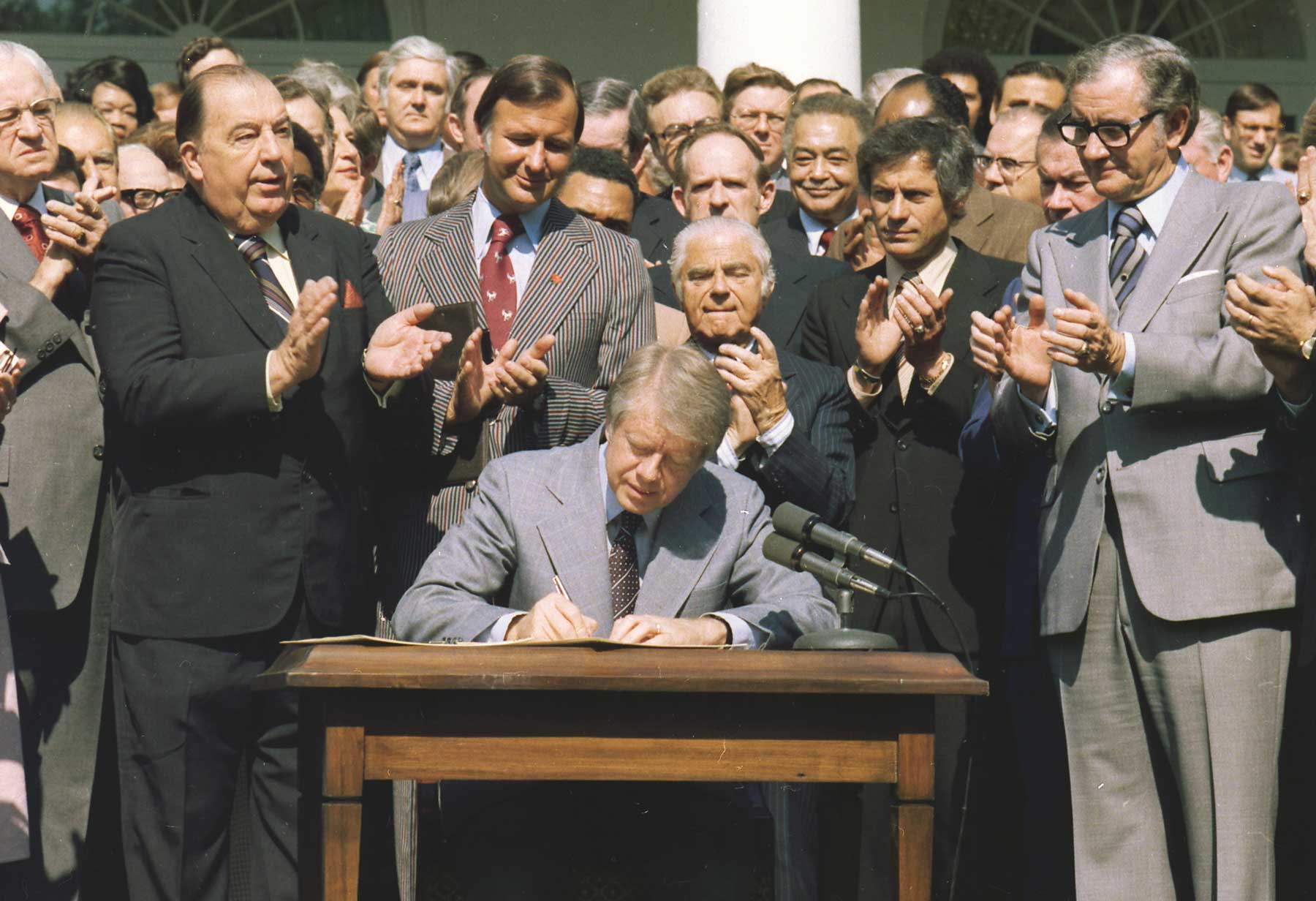
Things to Do
1. See America’s National Mammal, The Bison:
The park’s most popular resident happens to be our national mammal, the Bison. Seeing one of these majestic creatures in person is truly a sight to behold.
The bison is the largest mammal in North America. Their common name (buffalo) comes from the French who called them “les boeufs” (which means oxen) and over time that being changed to buffalo.
These majestic animals are visible in both the North and South Units of the park. In the South Unit they can typically be spotted shortly after crossing the interstate bridge into the park upon descending into the first canyon, among other places.
In the North Unit, they can typically be spotted immediately after entering the park.
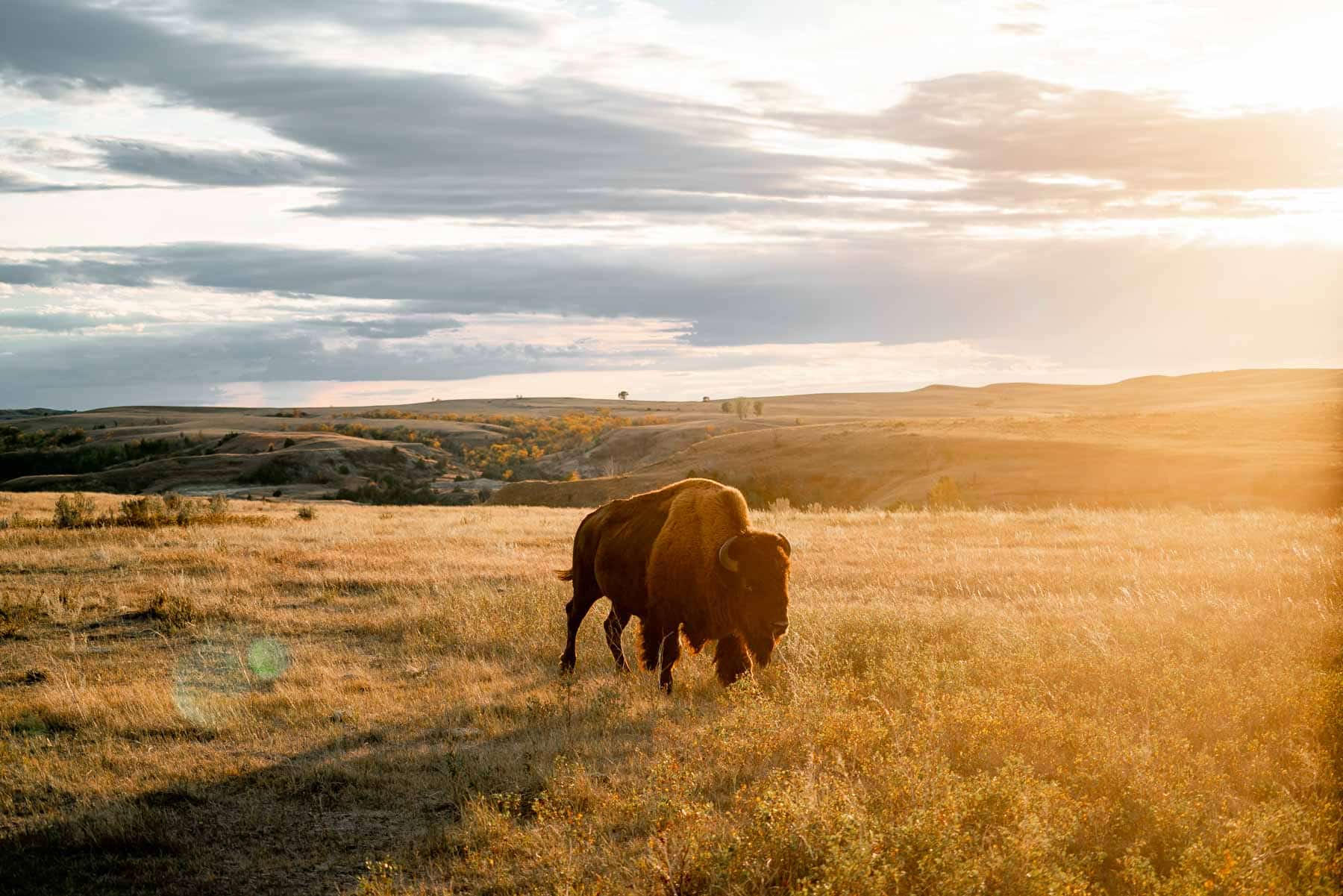
2. See a sunset from River Bend Overlook
Perhaps the best place in the park to see the sunset is River Bend Overlook. Located in the North Unit, this vista offers epic, panoramic views of the Little Missouri River and surrounding badlands.
It’s also a very short walk from the parking lot down to the viewing pavilion.
CAUTION: During our visit I sat and watched the sunset from the grassy hill featured in the foreground. Upon the 10 step walk back to the trail featured in the photo above I encountered a prairie rattlesnake.
I never would have seen it were it not for the tell-tale rattle noise which I found to be reassuringly loud.
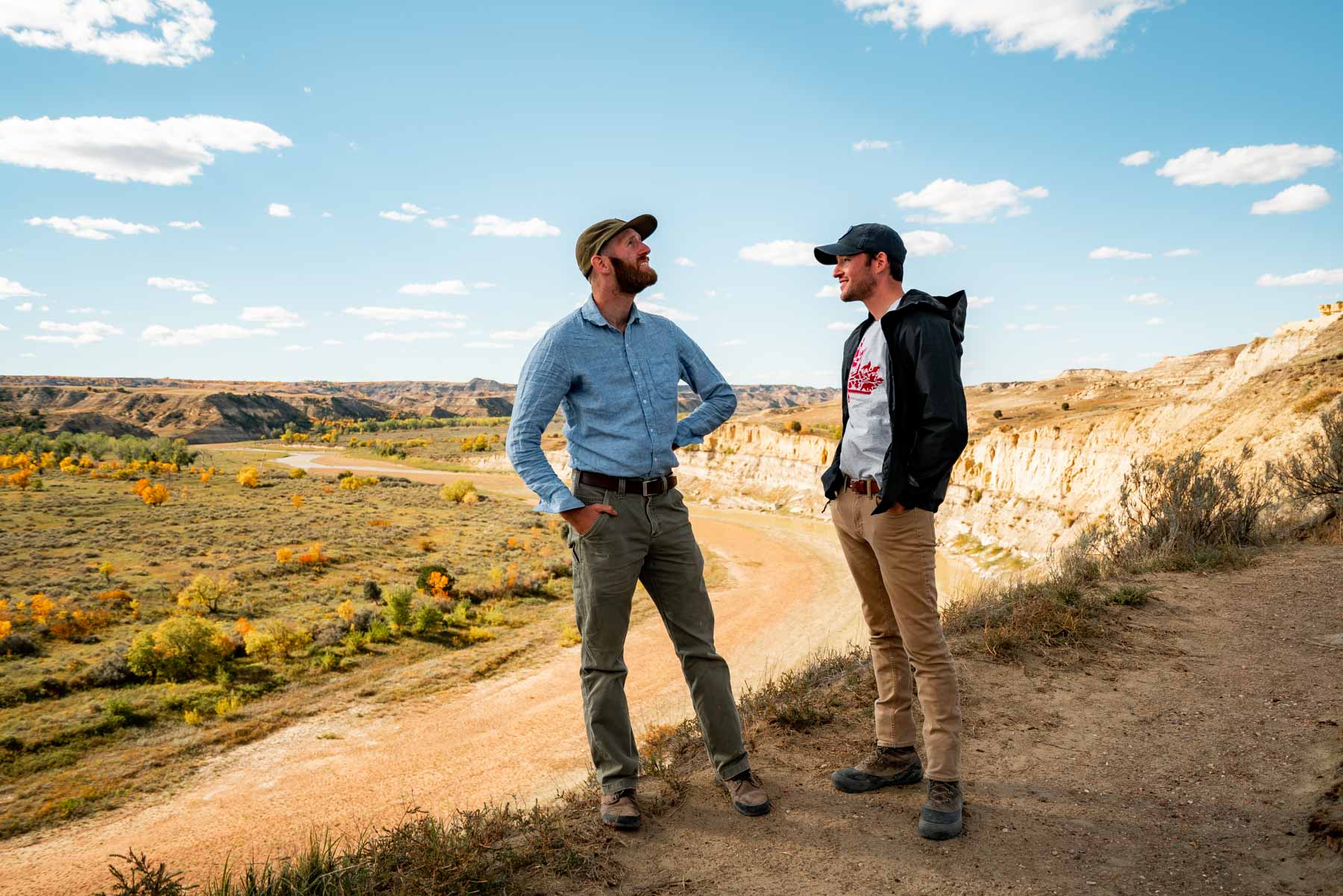
3. See a sunrise from Oxbow Overlook
The best place to watch a sunrise in the park is Oxbow Overlook. This spot features breathtaking panoramic views of the Little Missouri River Valley that will wow at anytime during the day.
From the overlook there are several trail opportunities including the popular Achenbach Trail. If you look closely into the canyon below you can often spot bison grazing.
Oxbow Overlook is located in the North Unit of the park at the very end of the main park road.

4. Discover the Ancient Petrified Forest Trail
My favorite hike (and easily one of the highlights of the entire trip) was the Petrified Forest Trail. I almost didn’t hike this trail as I had not read much about it anywhere but had some extra time left on my last day in the park. Boy was I glad I did!
- Length: Depends (1.5 miles each way to either of the petrified forests OR can do 10 mile loop)
- Time: 2-10 hours depending on how long you linger
- Elevation: Maybe 200ft
According to the National Park Service, the park has the third highest concentration of petrified wood in the United States. Who knew!
To get to the trailhead you actually have to leave the South Unit of the park and drive down the interstate one stop to West River Rd. Signs (or google maps) will eventually lead you to the trailhead from there.
We opted for the North Trail as we were told by another hiker that had done both that it was far superior – we were not disappointed.
Now I’ve been to Petrified Forest National Park, and absolutely loved it, but the Petrified Forest in this amazing park blows the one in Arizona out of the water. The stumps of trees are absolutely massive – some of them more than 6 feet tall and larger!
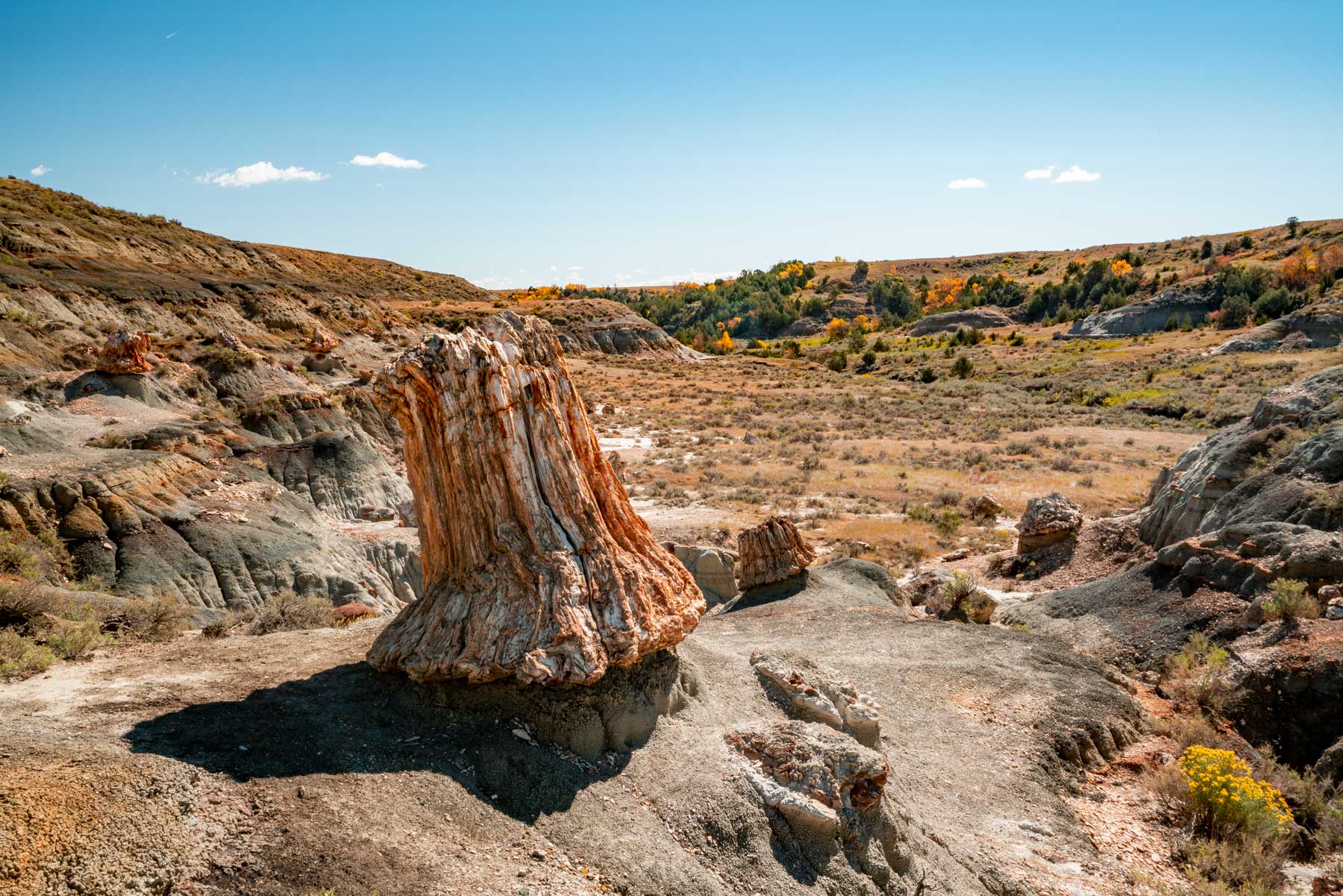
5. Admire the Wild Horses
One of the most sought after animal sightings in the park is that of the non-native wild horses that exist in the park today. We saw horses (and lots of them) every day that we were in the park.
If you’re determined to see these animals in the wild, the South Unit is your best bet. We saw them most often near the Coal Vein Trail. Keep your eyes peeled on the tops of hills and you’re likely to see some.

Watch Our Theodore Roosevelt National Park Film
Encompassing over 70,000 acres, Theodore Roosevelt National Park boasts a stunning array of breathtaking badlands, snaking rivers, diverse wildlife including our national mammal, and colorful canyons.
Journey with us as we explore a land teeming with rugged beauty, massive mammals, epic overlooks, and the place where Theodore Roosevelt once claimed “it was here that the romance of my life began.”
This installment in the More Than Just Parks award-winning series featuring Theodore Roosevelt National Park was done not only to showcase the amazing recreational opportunities that exist in the park but to underscore the importance of protecting North Dakota’s wild places so they stay legendary.
List Of Historic Sites In North Dakota
- Theodore Roosevelt National Park
- North Dakota Heritage Center & State Museum
- Fort Union Trading Post National Historic Site
- Knife River Indian Villages National Historic Site
- Fort Totten Historic Site
- Lewis & Clark National Historic Trail
- Fort Abraham Lincoln
- Ronald Reagan Minuteman Missile Site State Historic Site
- Chateau De Mores State Historic Site
- North Country National Scenic Trail
- Pembina State Museum
- Bagg Bonanza Farm
- The Enchanted Highway
- Fort Buford State Historic Site
- Standing Buffalo Monument
Why Trust Us About Historic Sites In North Dakota?
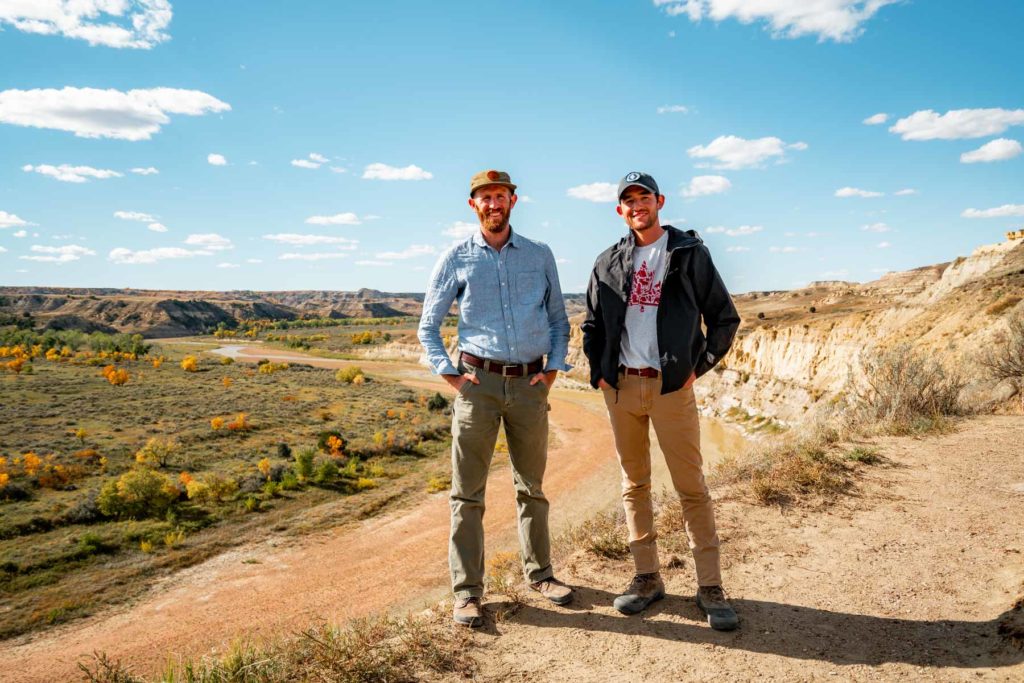
We’re Jim Pattiz and Will Pattiz, collectively known as the Pattiz Brothers and we absolutely LOVE the national parks.
You should probably know that we don’t just make this stuff up out of thin air. We’ve spent our entire adult lives exploring and filming America’s national parks and public lands.
We’ve worked with the National Park Service, the Department of Interior, USDA, U.S. Forest Service, and more for years creating films on important places and issues. Our work has been featured in leading publications all over the world and even some people outside of our immediate family call us experts on the national parks.
And, in 2018, our father – having spent a lifetime teaching history – joined us so that he could help us to tell the stories behind these amazing places.
Meet The Parks Brothers
We Hope You’ll Follow Our Journey

Our goal here at More Than Just Parks is to share the beauty of America’s national parks and public lands through stunning short films in an effort to get Americans and the world to see the true value in land conservation.
We hope you’ll follow our journey through the parks and help us to keep them the incredible places that they are. If you’re interested in joining the adventure then please sign up below!
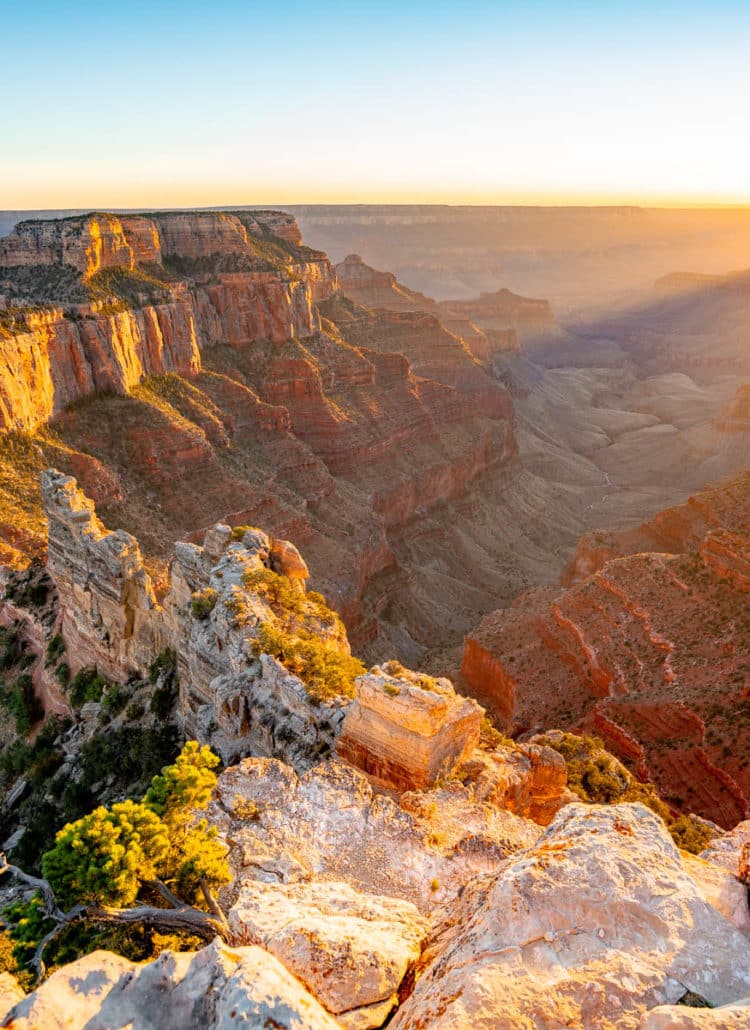
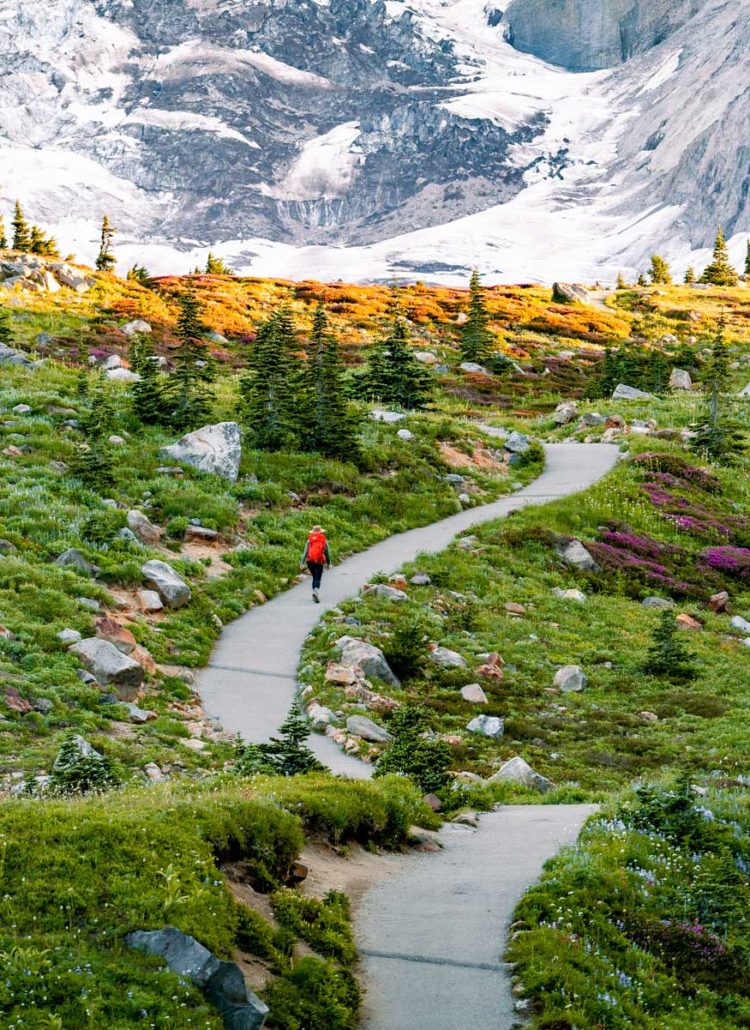
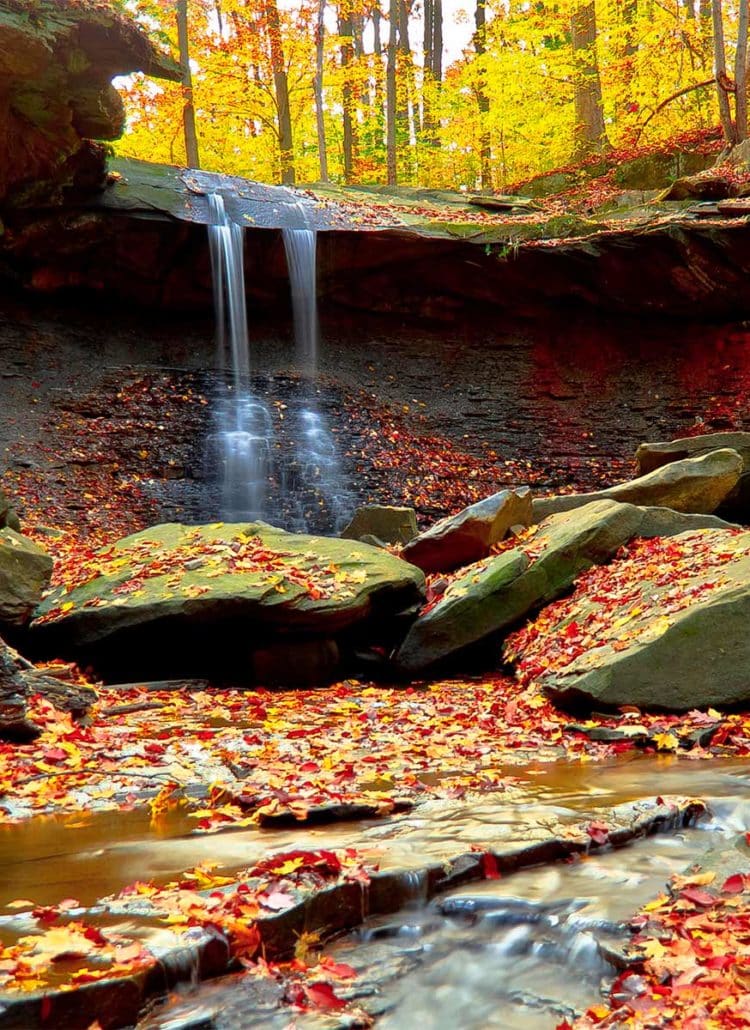
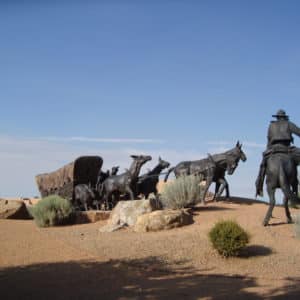

I love north Dakota . i’m doing an essay on it